The Scottish Highlands
Fort William is a small town in central Scotland nestled into the base of Ben Nevis – the UK’s tallest mountain – on the shores of Loch Linnhe. The town is surrounded by mountains, feeling a little like Norway or Switzerland if you use your imagination, even visited by the occasional cruise ship. The town has a definite adventure feel to it. Fort William was our rendezvous point for meeting up with Gavin and Emma who had just done a mammoth 12 hour driving day from their home in Essex to join us. And to add to the fun, Tramp now was travelling with a twin brother.
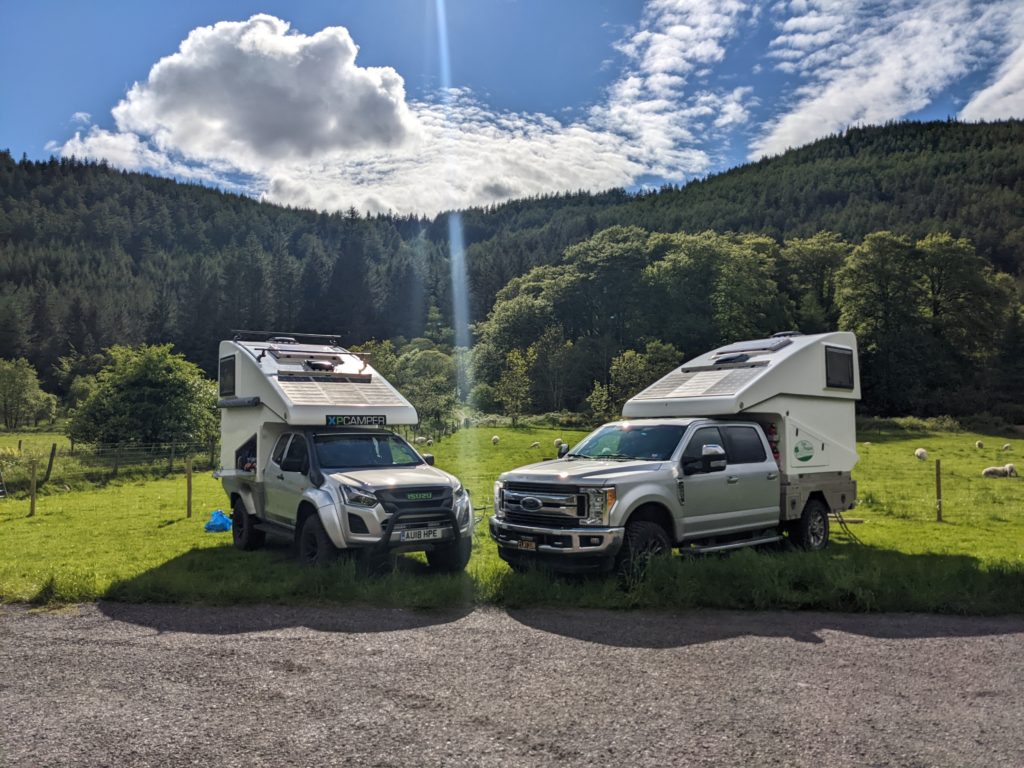
Gavin and Emma bought the same camper as Tramp from the same company in northern California with plans to set up a business to import them into the UK/Europe. We met in 2018 when we were finishing our trip around Europe and we’ve since become fast friends. They have both been unmeasurably helpful and supportive when we had to store Tramp in the UK before and during Covid.
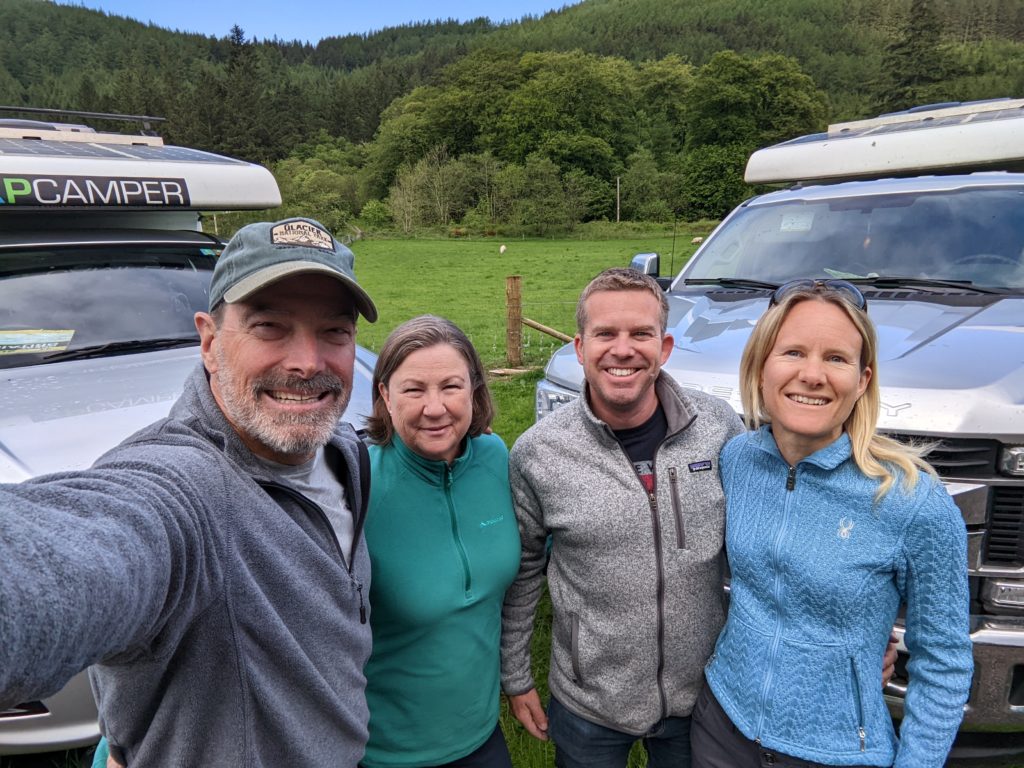
Now we have a chance to travel together, like minds with like campers, with a plan to tour the Scottish highlands for a week until they have to return to society for family and business commitments. And so it was that we left Fort William heading north, following one loch (a lake or sea inlet, usually surrounded by stunning mountains) after another, sometimes separated by canals and locks.
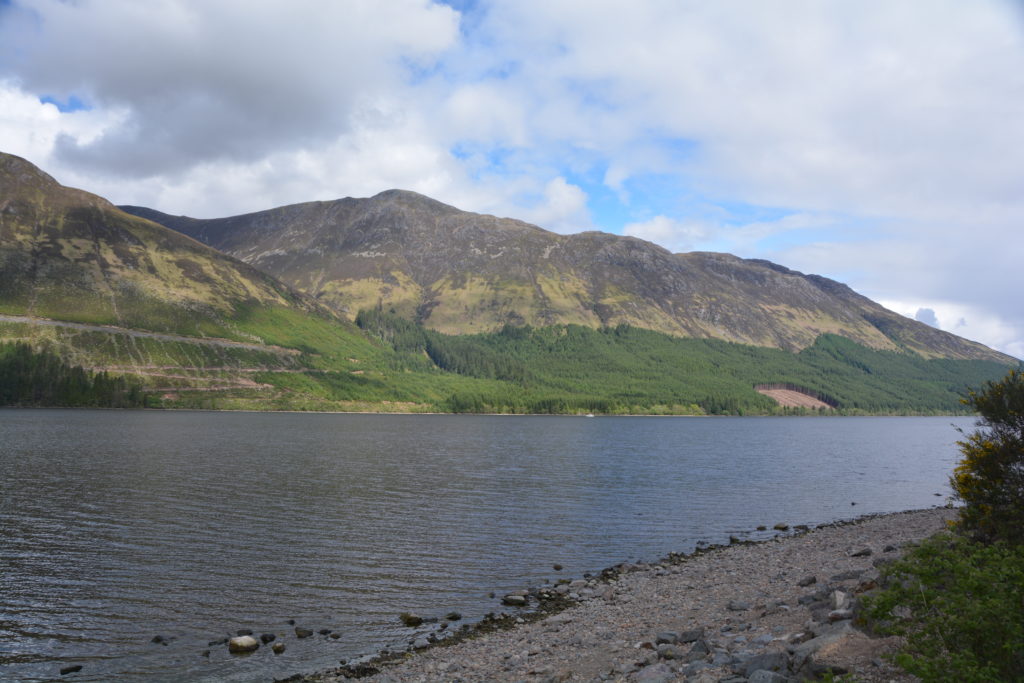
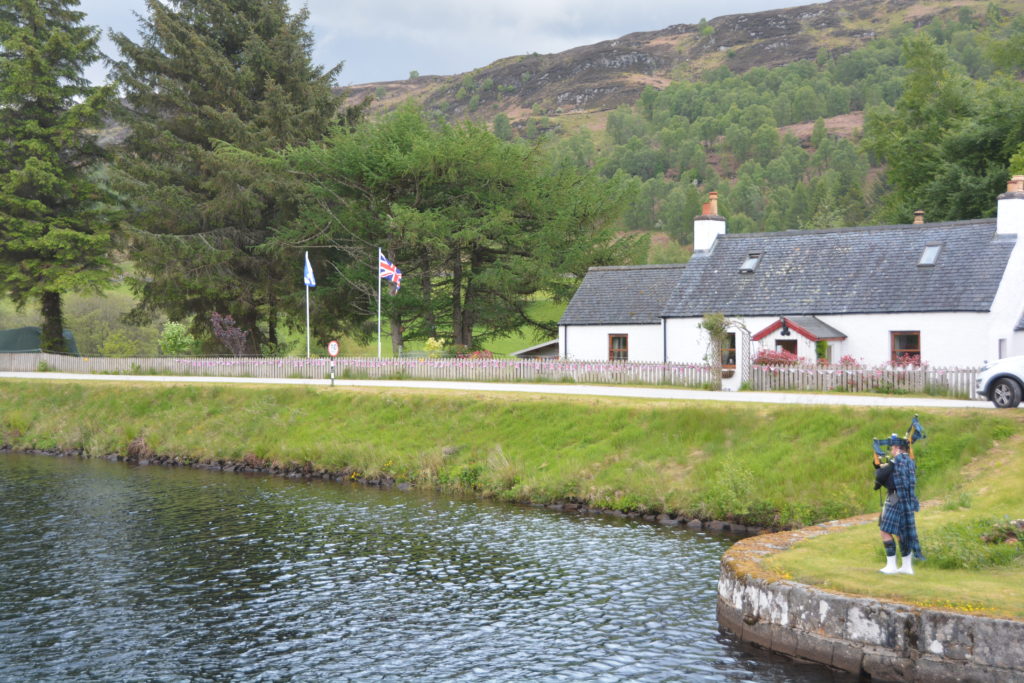
In Fort Augustus we followed the path of a few boats as they negotiated the deep locks of the Caledonian Canal which connects Loch Lochy with Loch Ness (known more famously as being home to the monster). These 29 locks were an engineering masterclass when they first opened in 1822, allowing cargo and passengers to effectively sail right through the centre of Scotland instead of the much longer and more treacherous route around it’s north coast. We love this sort of stuff.
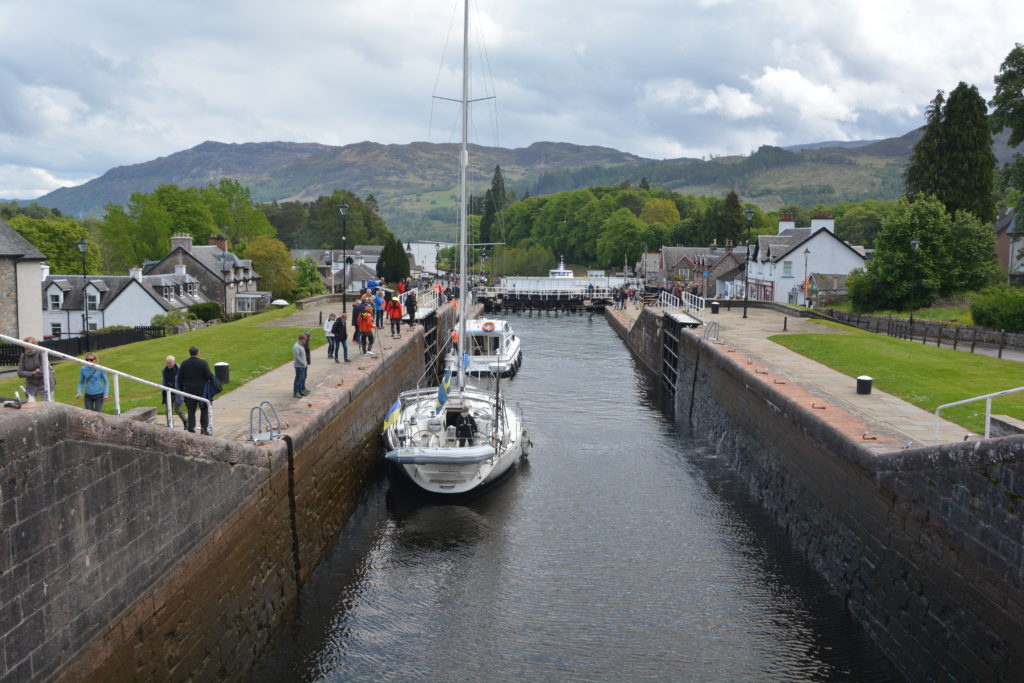
Scotland is famous for it’s lochs (and it’s locks!) and we followed the road westward from the shores of numerous beautiful lochs until we reached the quaint seaside town of Plockton. Plockton has its requisite castle perched up on the hill and its requisite protected harbour with fishing boats and whitewashed cottages lining the water’s edge. Plockton was very Scotland.
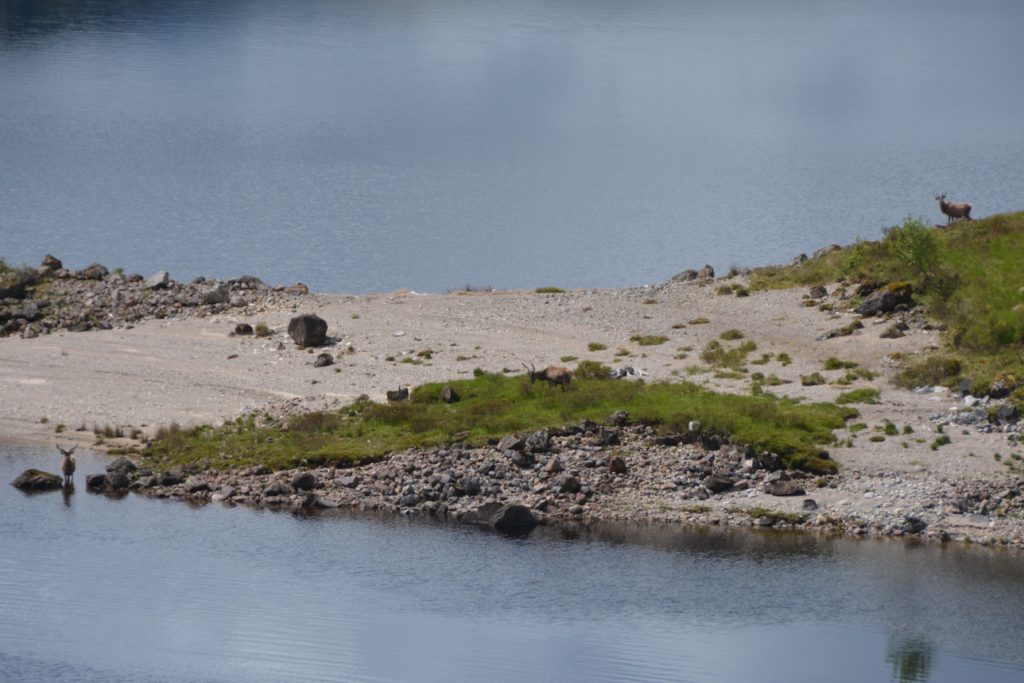
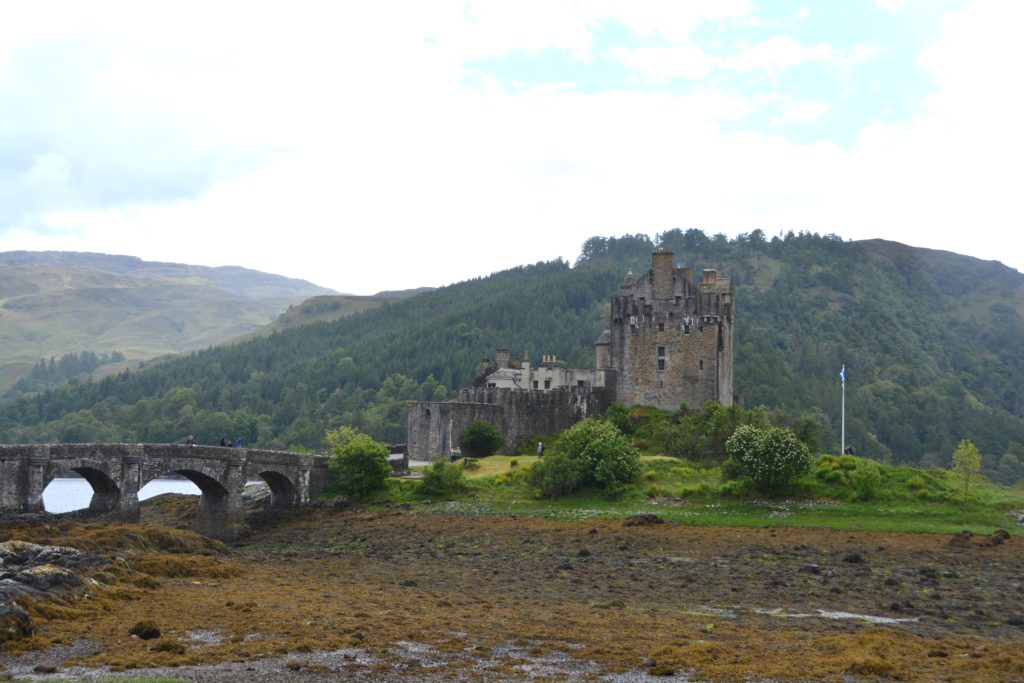
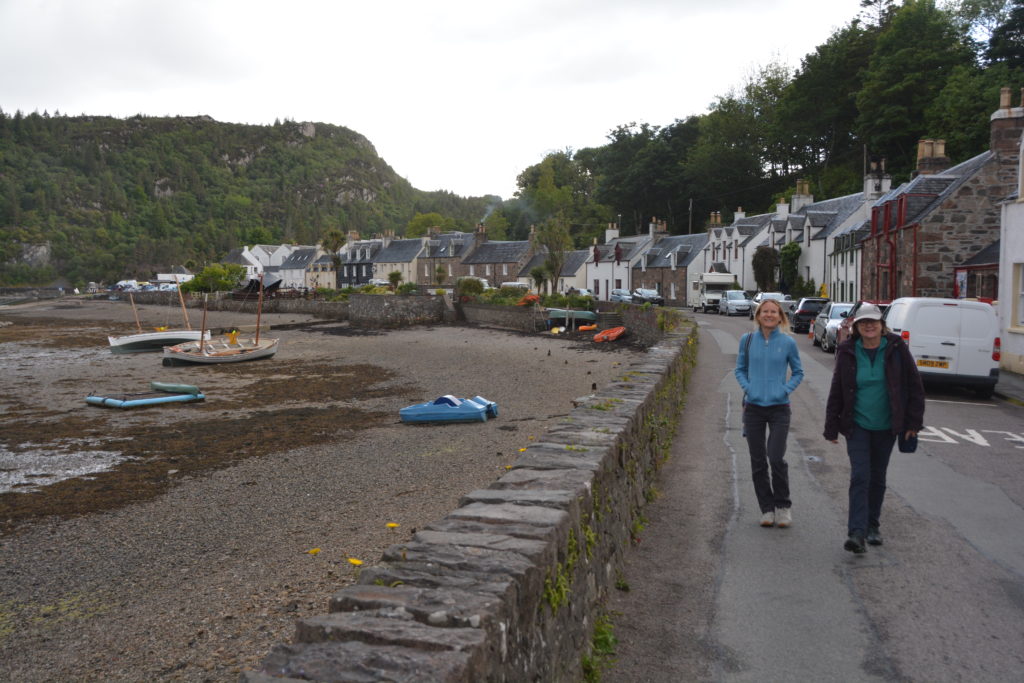
We camped the night further north on Loch Maree, nestled into a grove of Scots pines, the drizzle not as annoying as the little biting midges which are as nasty as they are persistent. Northward we continued the next day, a dazzling blue Scottish sky, just wonderful scenery in all directions around every turn.
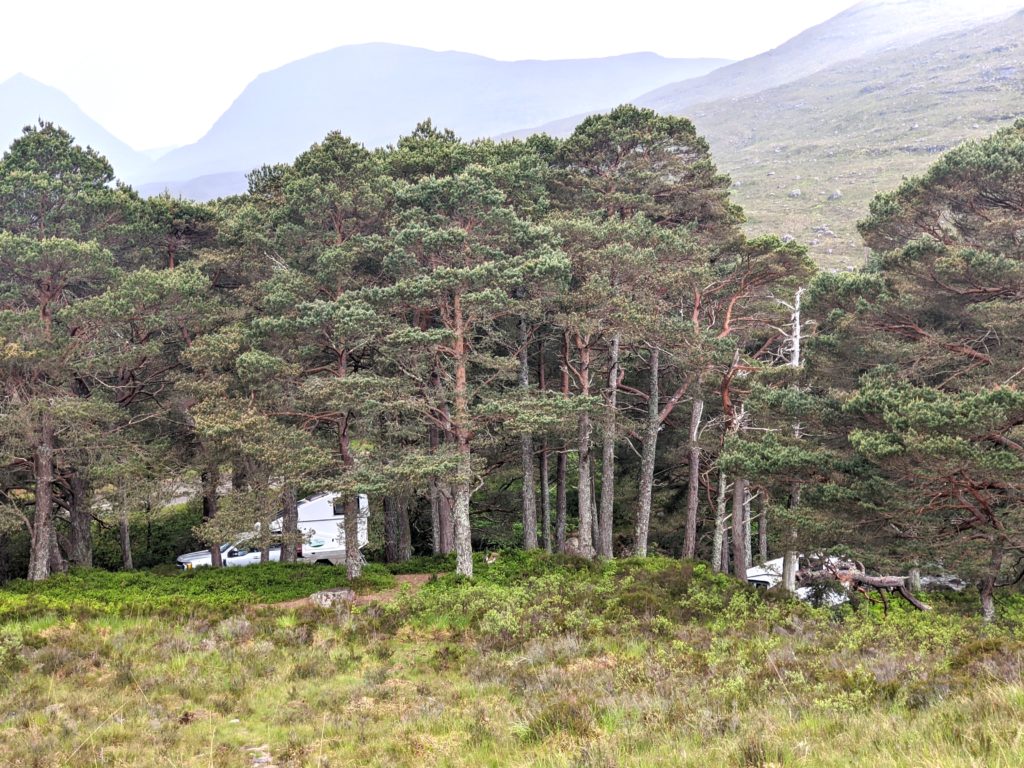
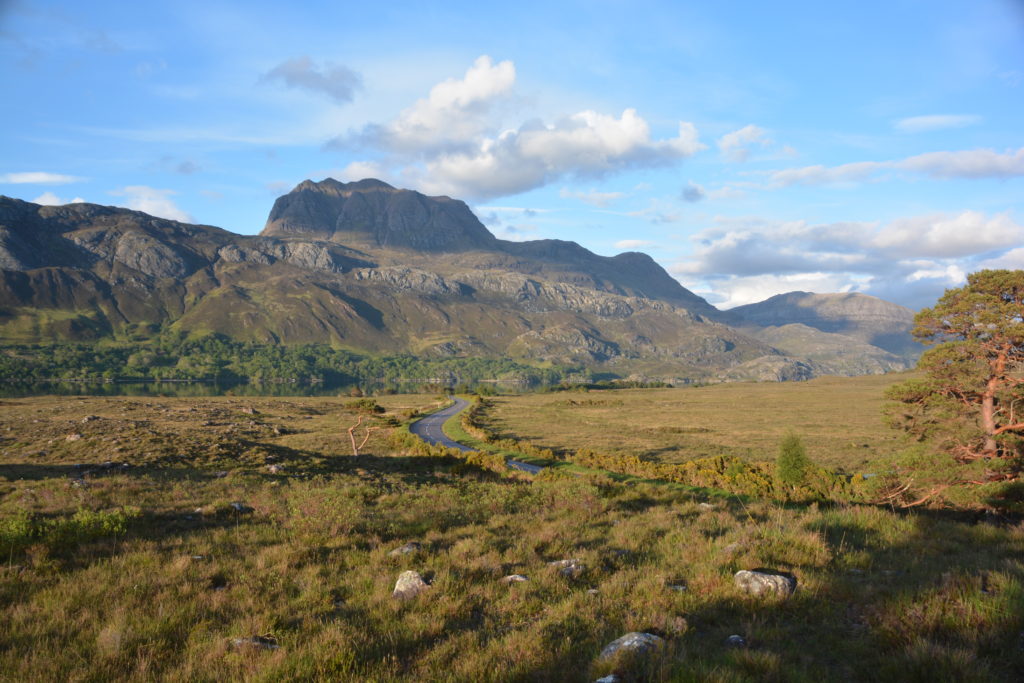
We followed a one lane road along a wonderful coastline through small clusters of homes to Red Point, a small thumb-like peninsula between two beautiful sandy beaches. From the end of the road we walked for over two hours along the edge of the peninsula from beach to beach, mixing it with the sheep, the gentle waves of the placid blue ocean and the interminable boggy ground. This was Scotland at it’s best, soggy, sunny and stunning.
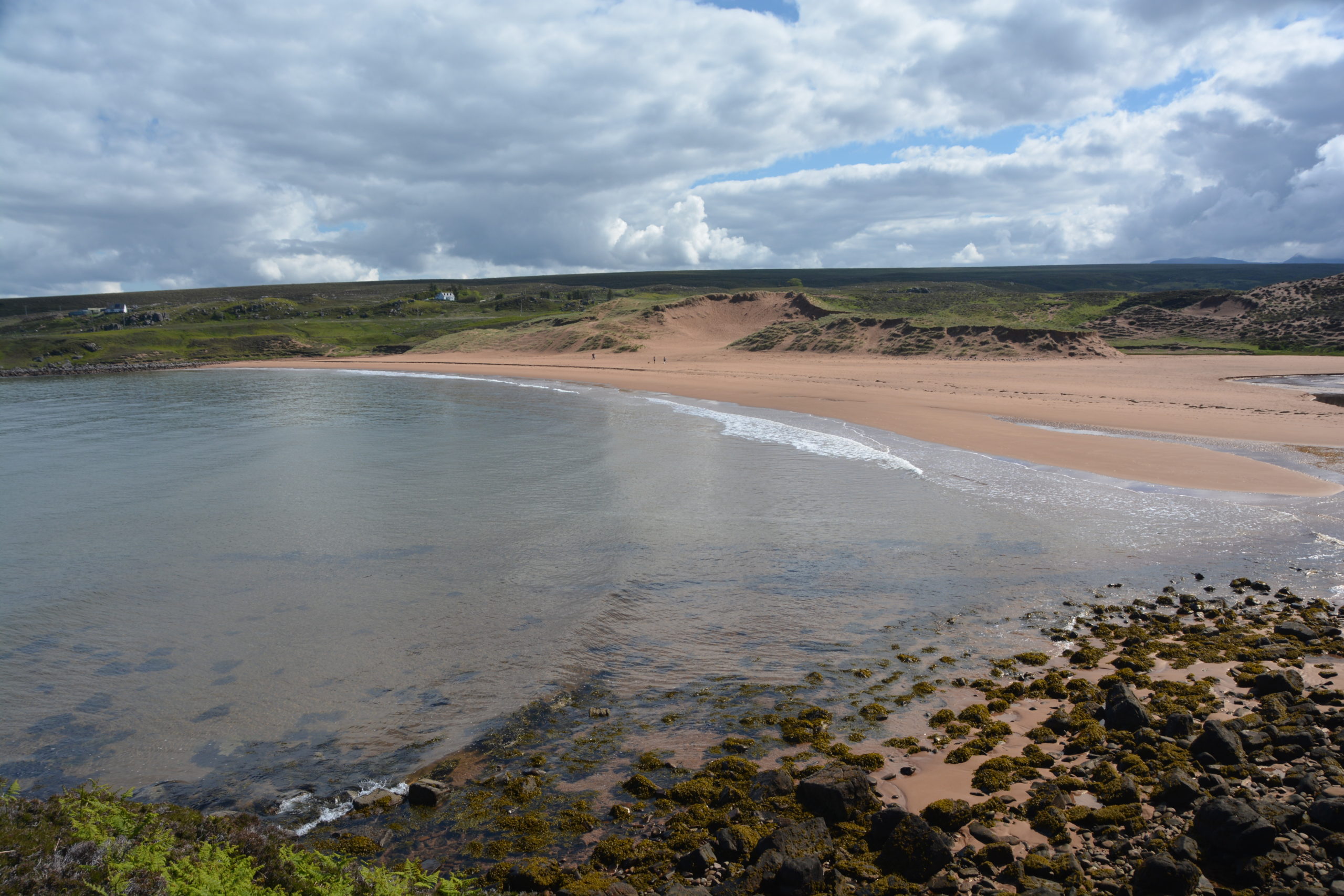
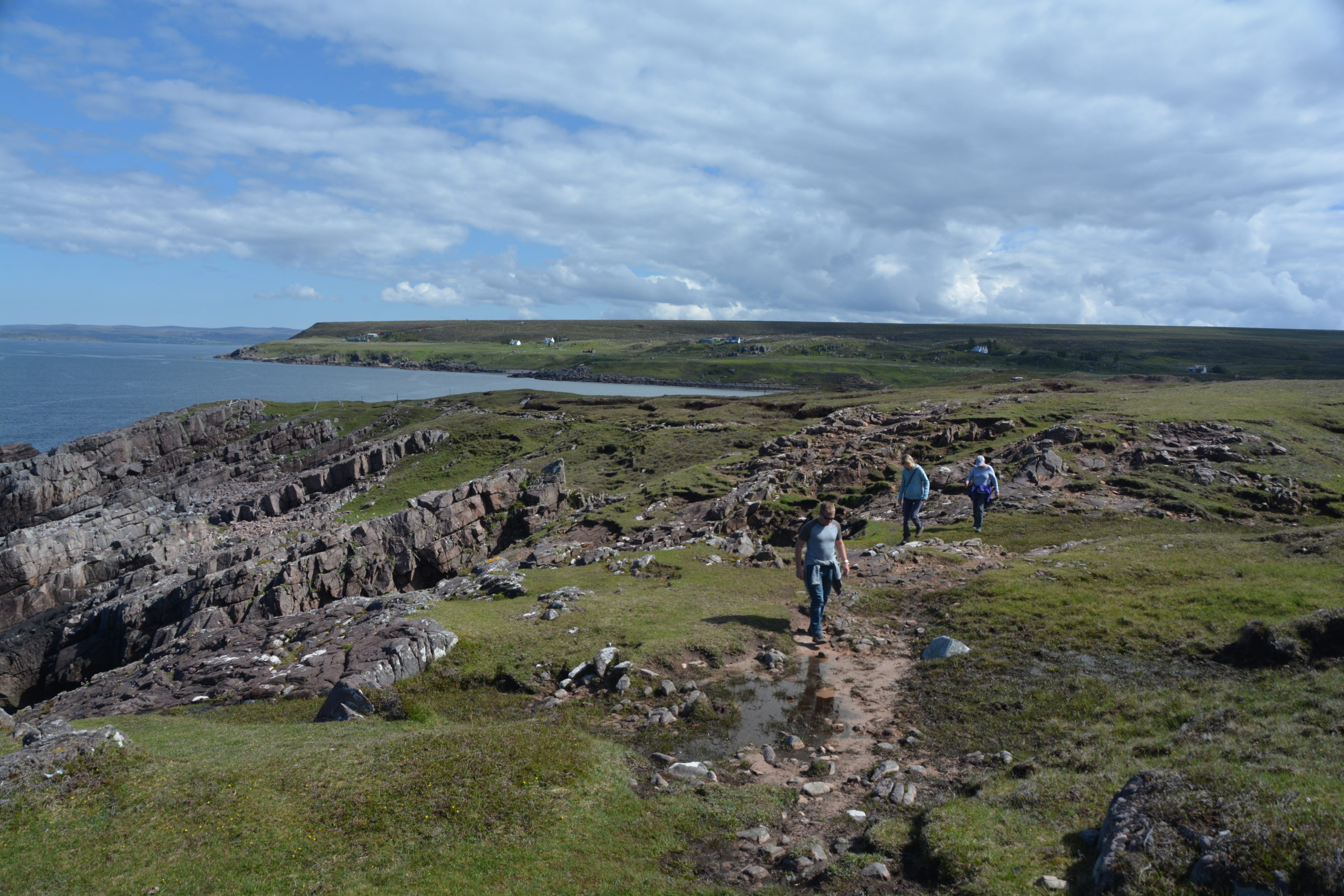
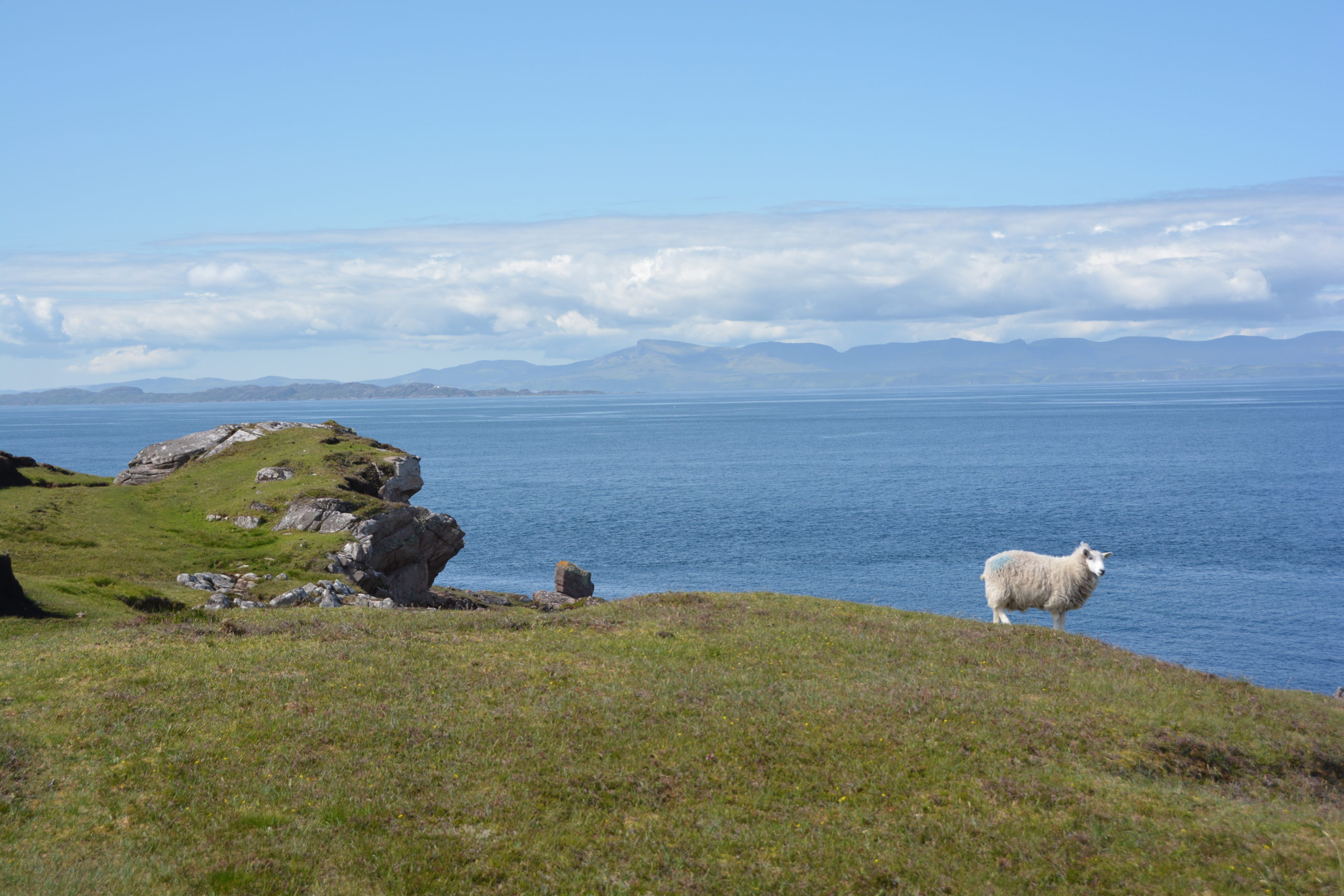
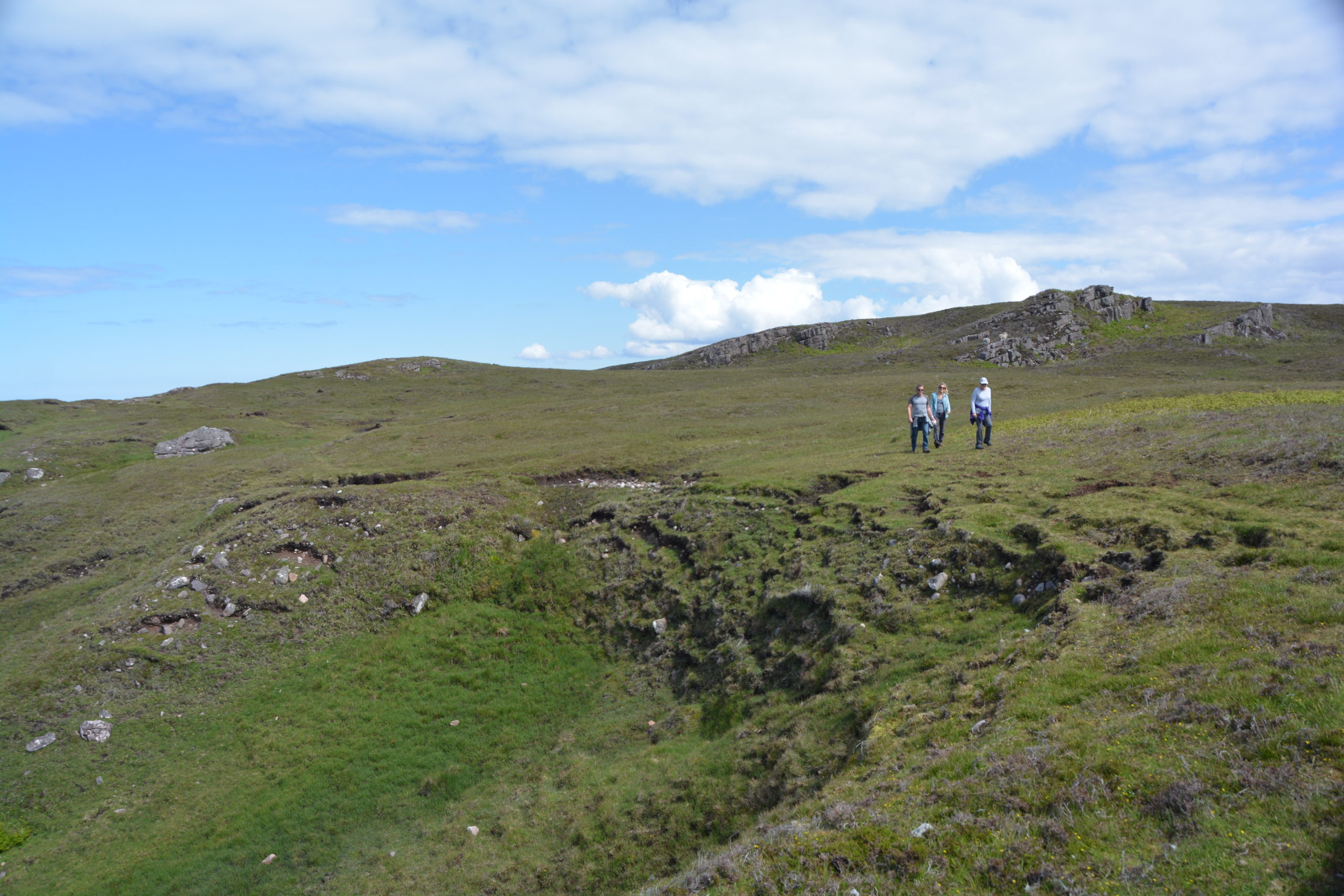
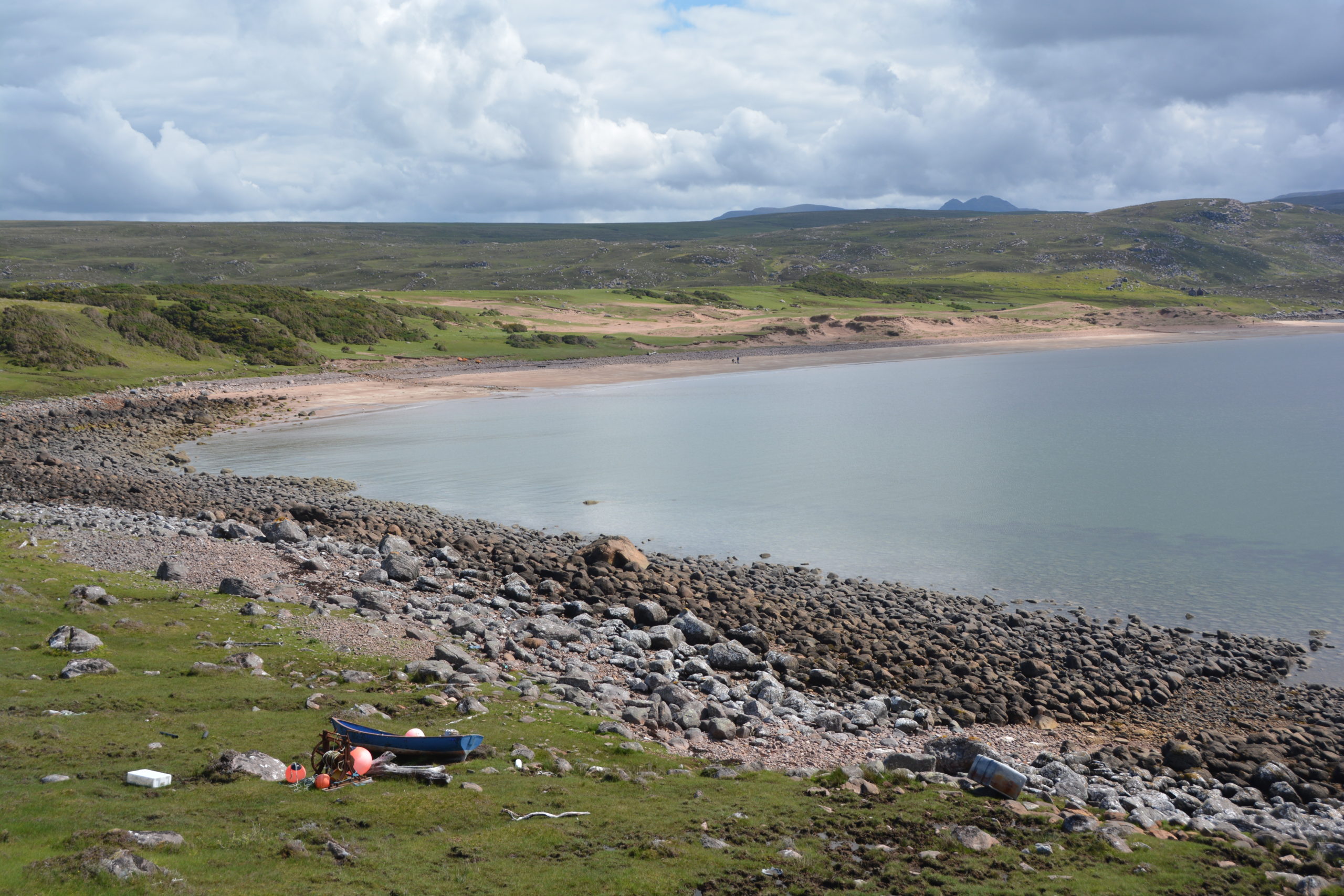
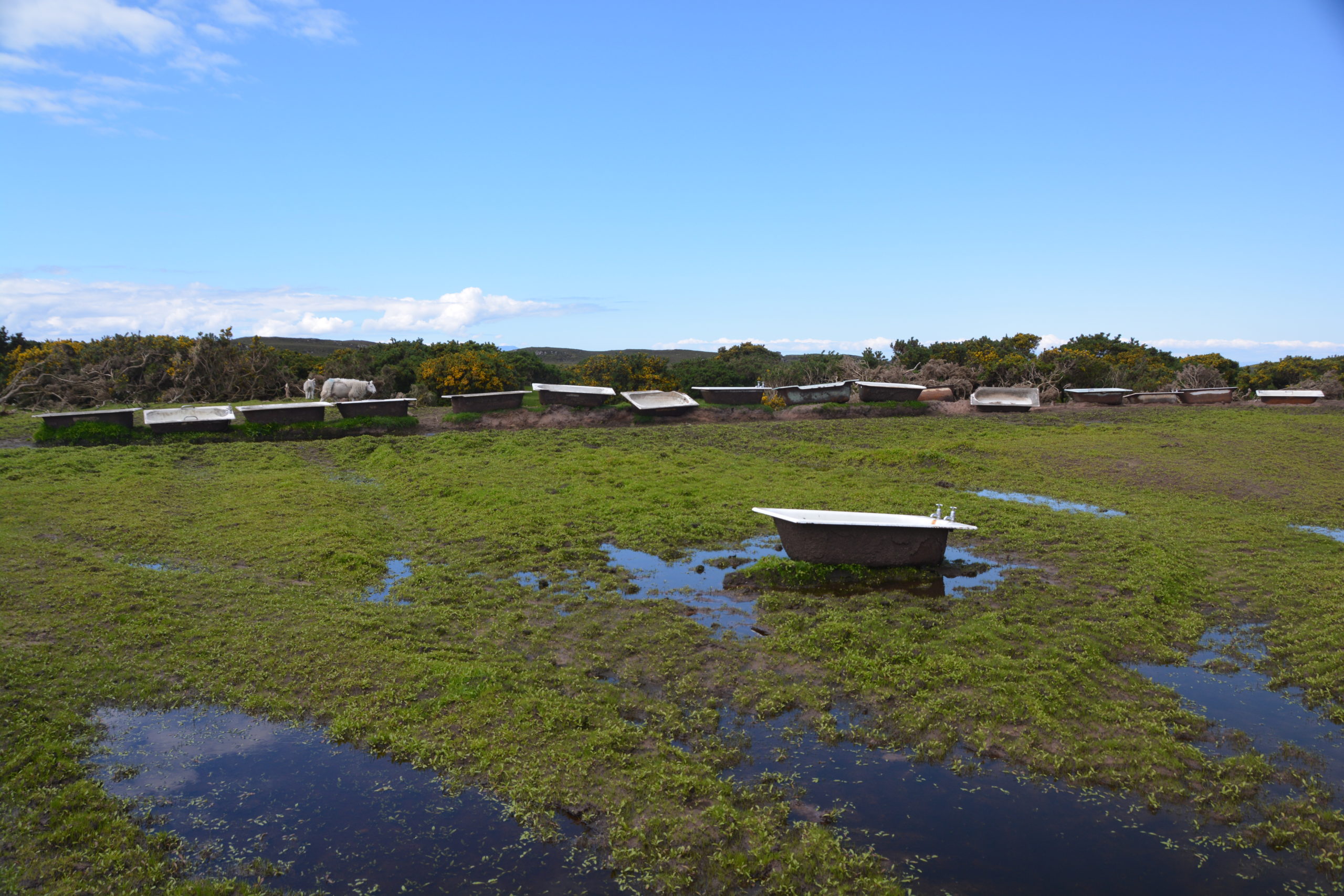
But again, it was northward and after following many more lochs, stopping for spectacular views of deep carved bays lined by steep bald rocky mountains, the ubiquitous spray-painted sheep and endless winding single lane roads, we finally reached a place called Altandhu, a good campsite amongst only a handful of homes, overlooking the Summer Isles which were scattered across the blue water just off shore.
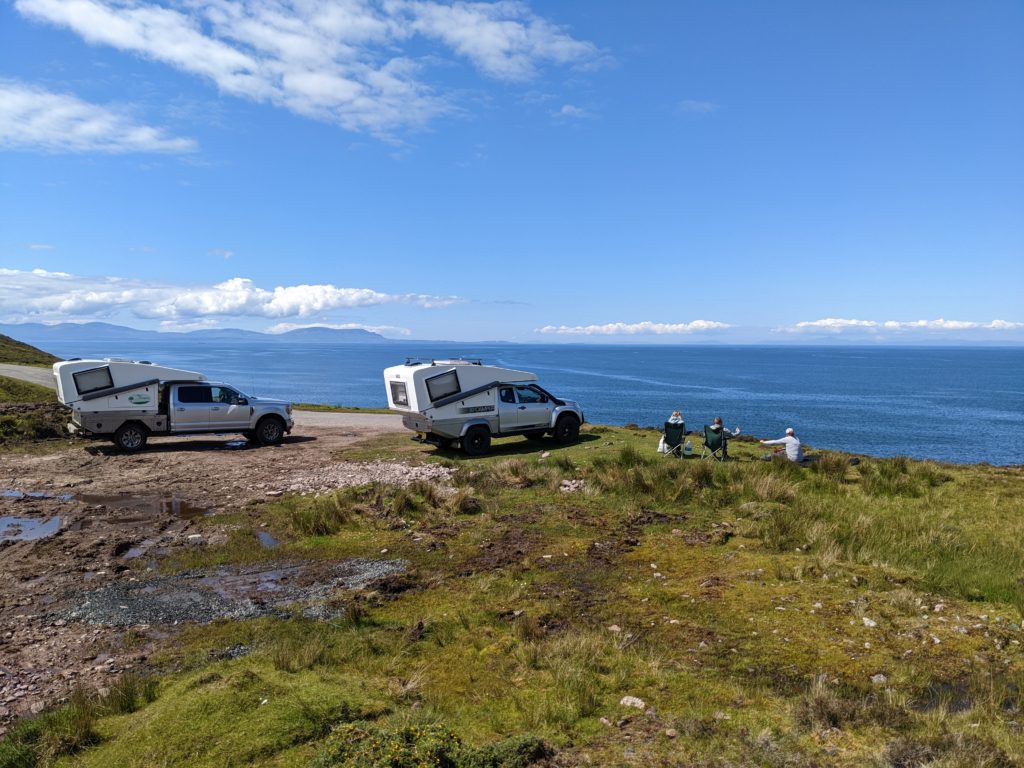
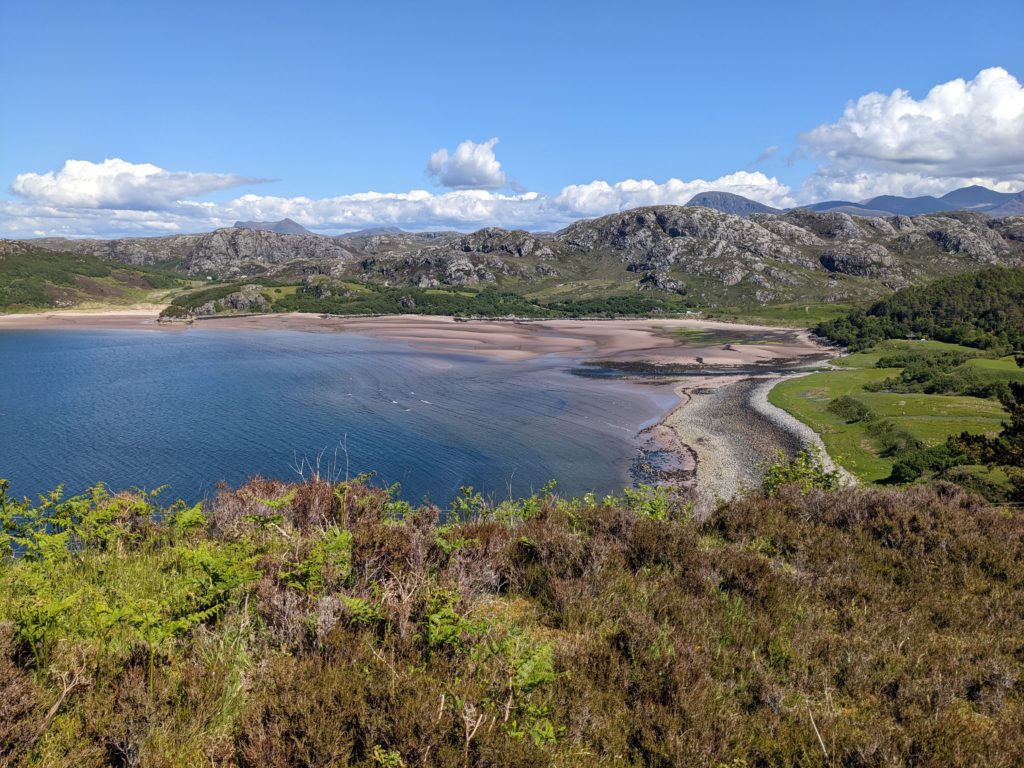
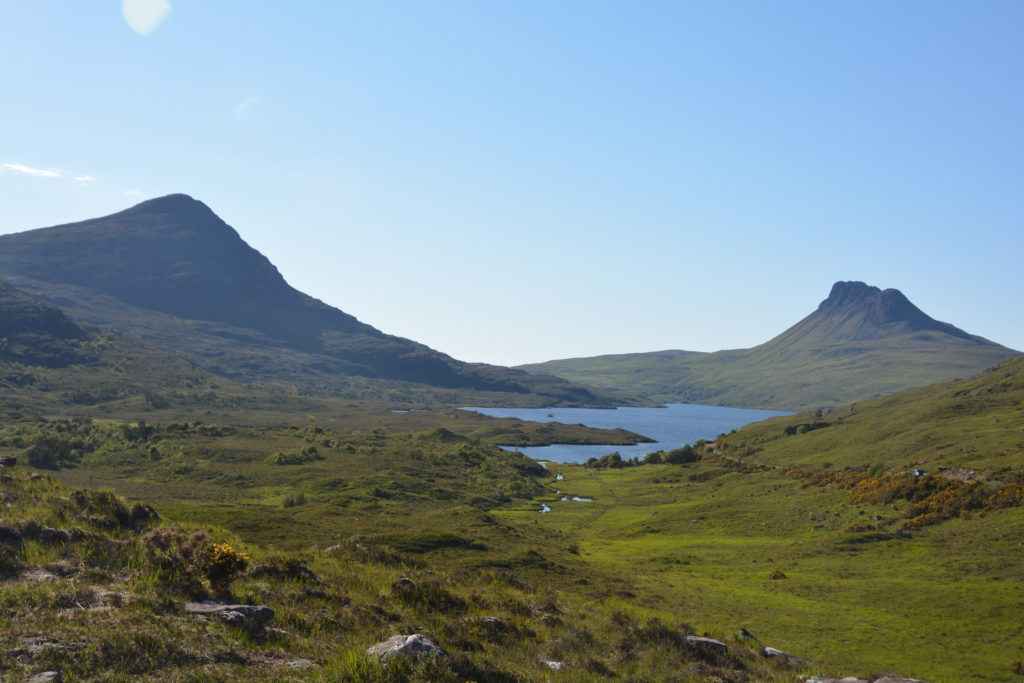
We enjoyed the late evening sun sitting on the deck of the local pub, a few beers and fish and chips met all our needs. What a smashing good day.
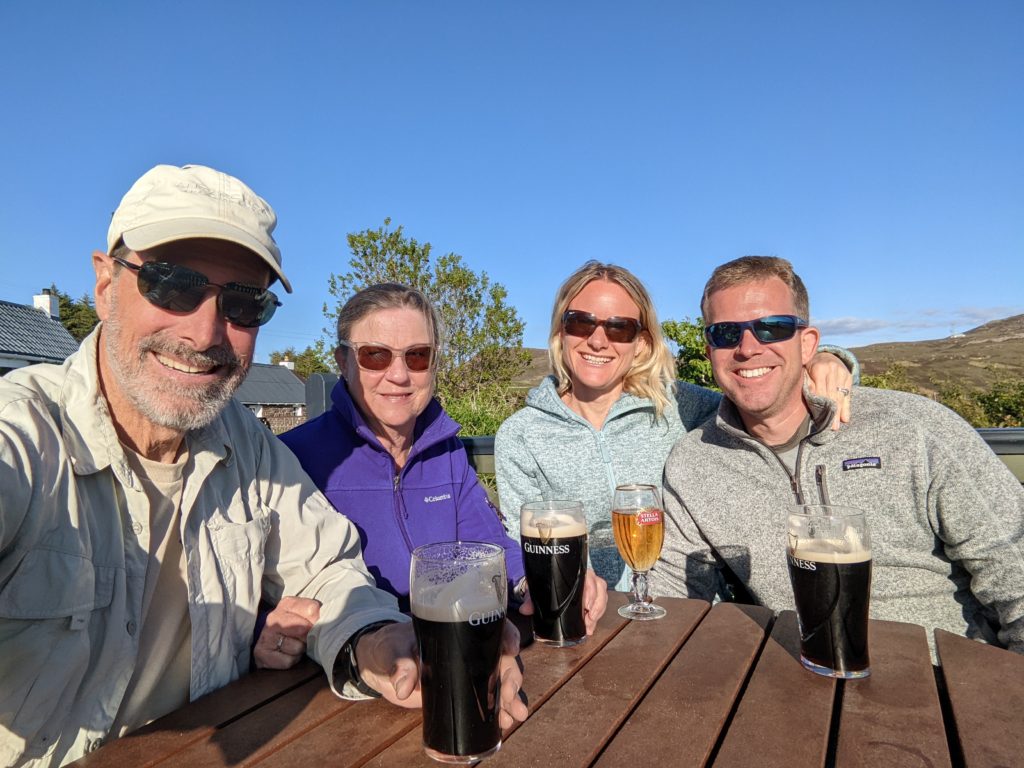
Driving on single lane roads needs a little explanation. These roads may stretch across open moors or wind themselves up and down and around lochs, hills and thick woods. They are paved but literally no wider than Tramp’s tyres and to veer off them could lead to mud, a ditch or worse. But they also feature ‘Passing places’ as the signs tell you, slightly wider areas for cars to pull over so oncoming vehicles can pass.
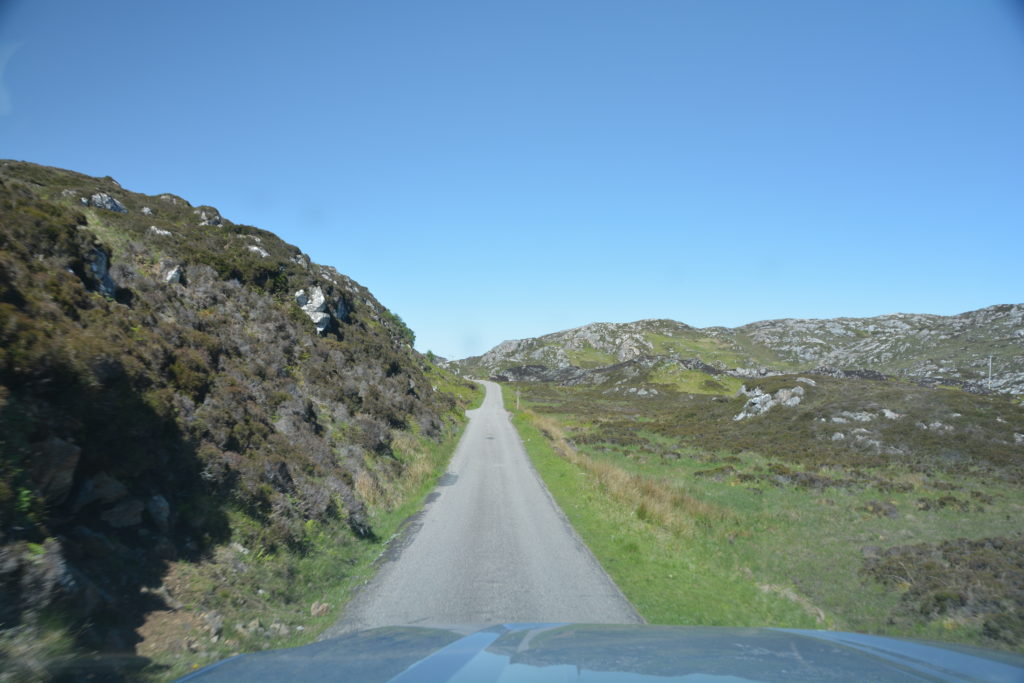
The general rules are that when seeing an oncoming car the first person to get to a passing place pulls over and lets the other pass, always with a friendly wave. Everyone is so darn polite it is sickening and we couldn’t help but wonder how this system would work in Columbia or Russia…basically, it wouldn’t.
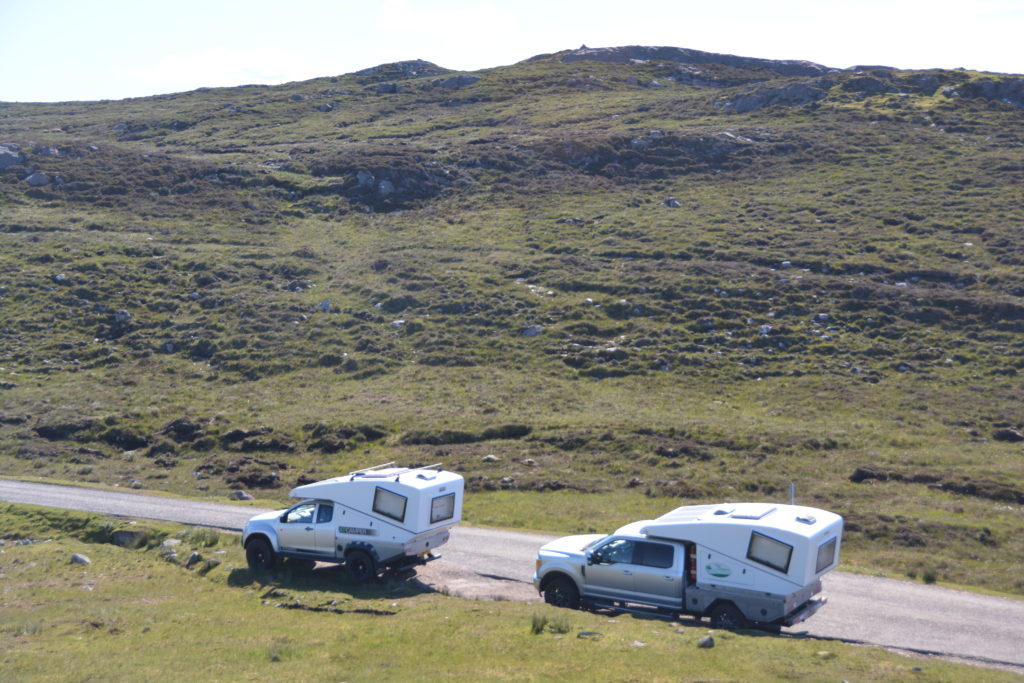
Our northward journey involved many side trips, including a long winding and obscure track past sheep farms and simple remote homes to Stoer Lighthouse, perched high on a promontory, the ever-present sheep always at hand.
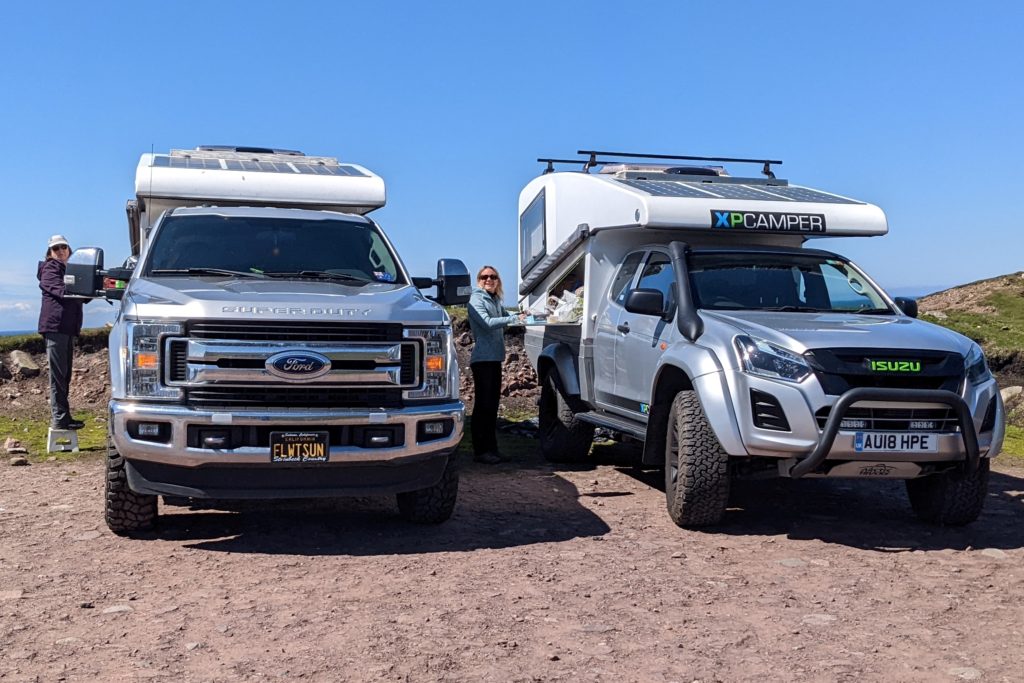
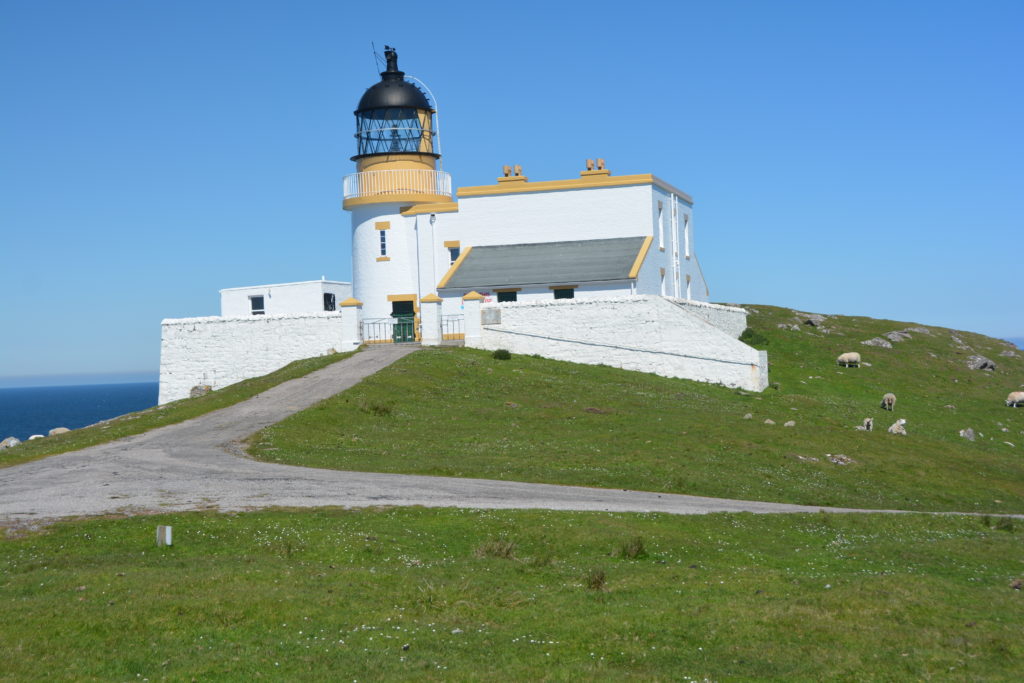
These off-the-beaten-tracks offer more challenging single lanes, so many tight blind turns with heart-in-mouth you couldn’t count them, so many friendly pullovers and everyone inhaling while Tramp squeezes past another vehicle, across wide open moors, around imposing mountains, along stunning lochs before arriving at Oldshoreman Beach.
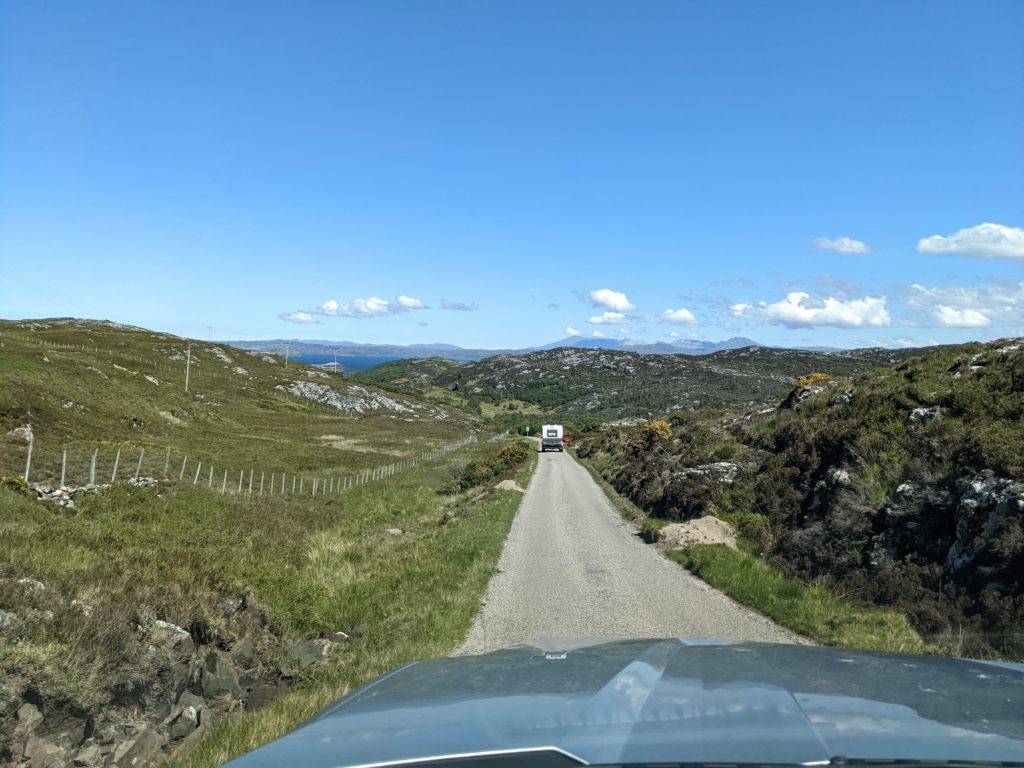
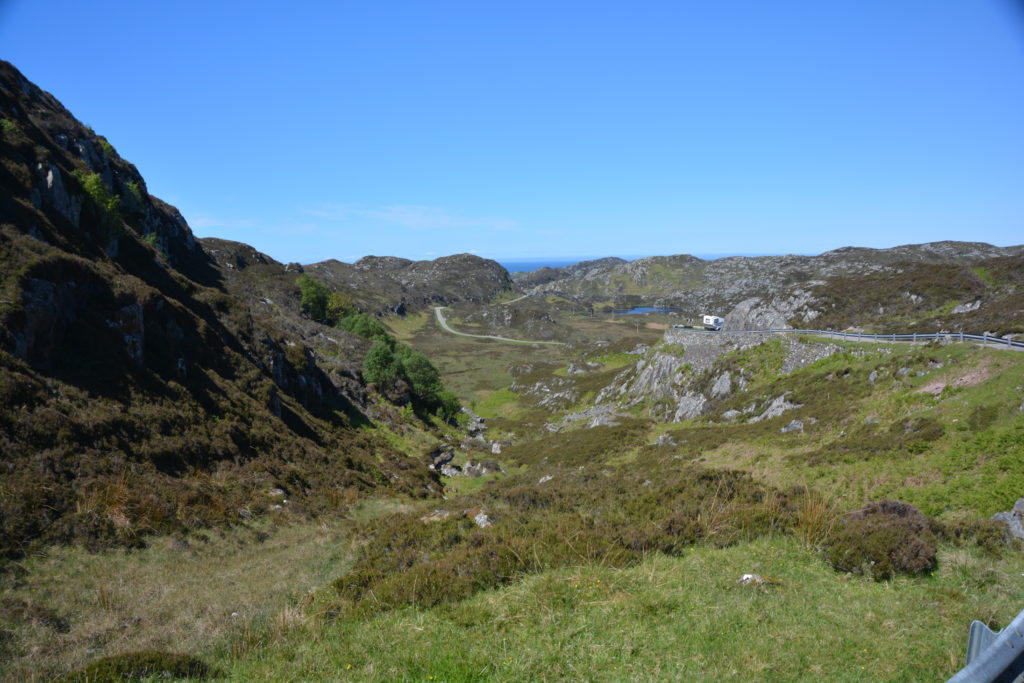
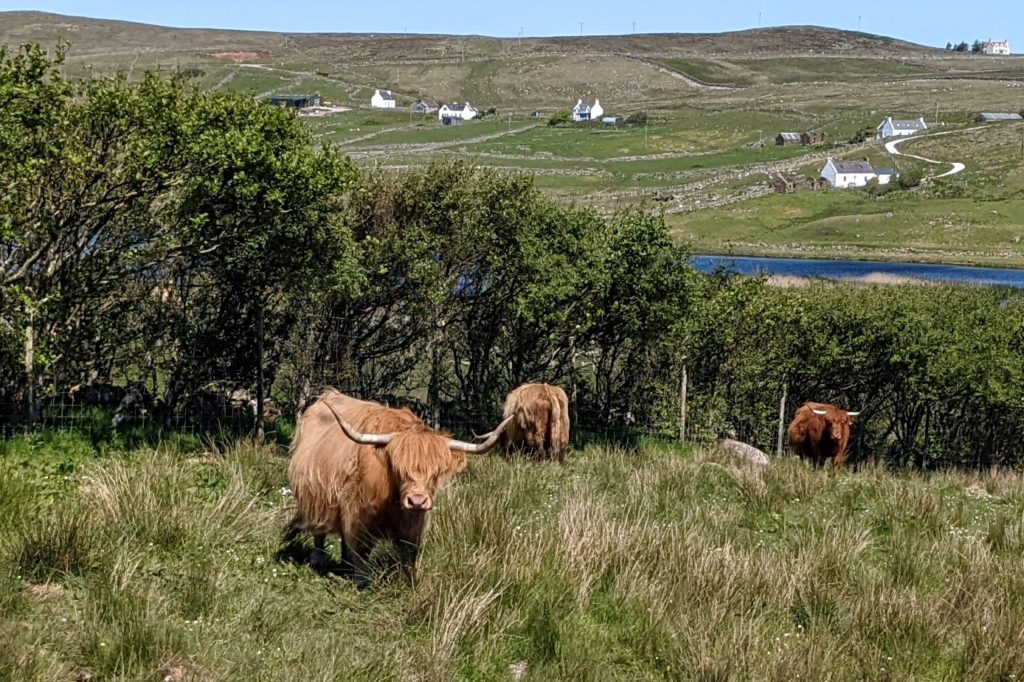
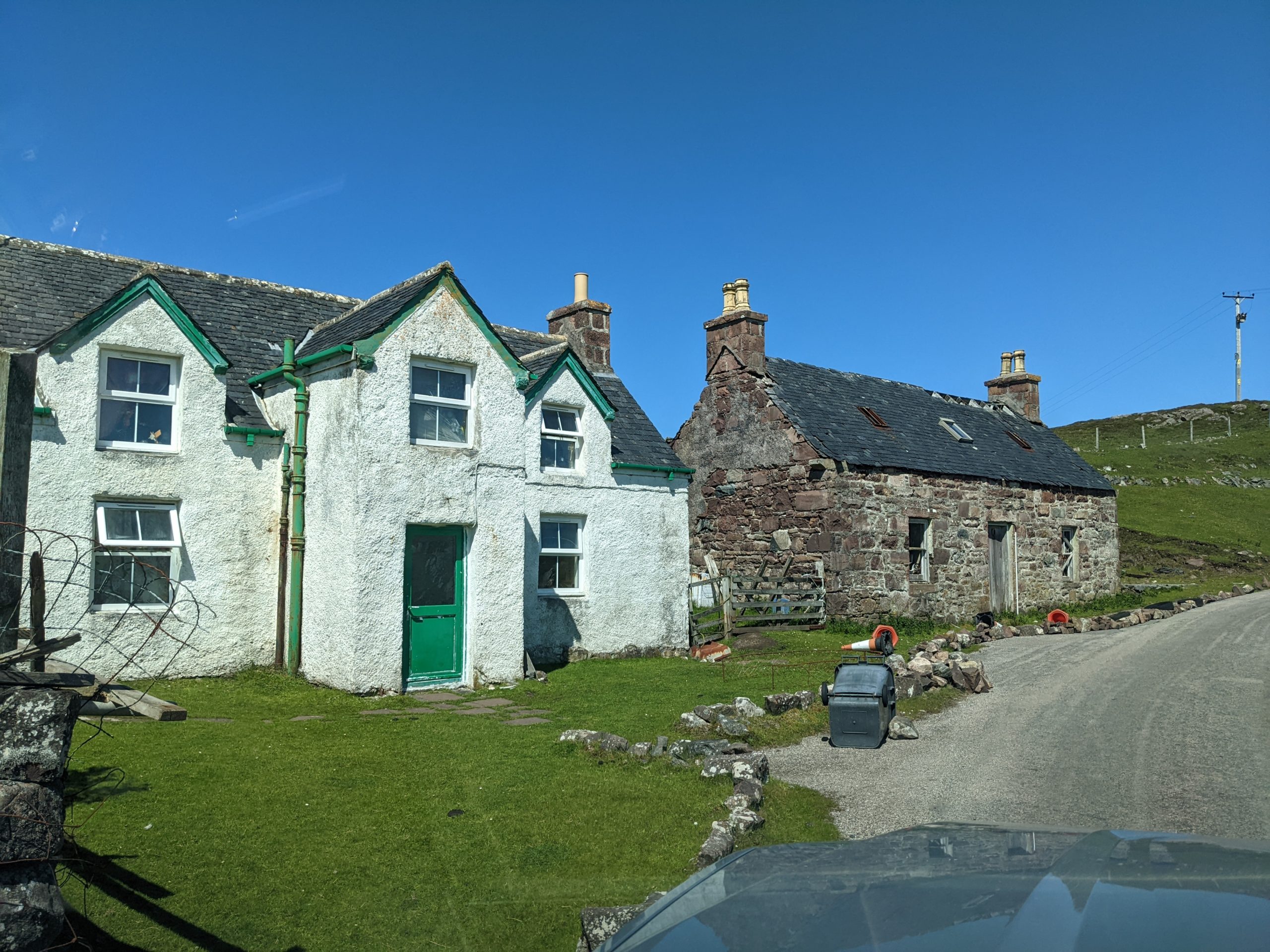
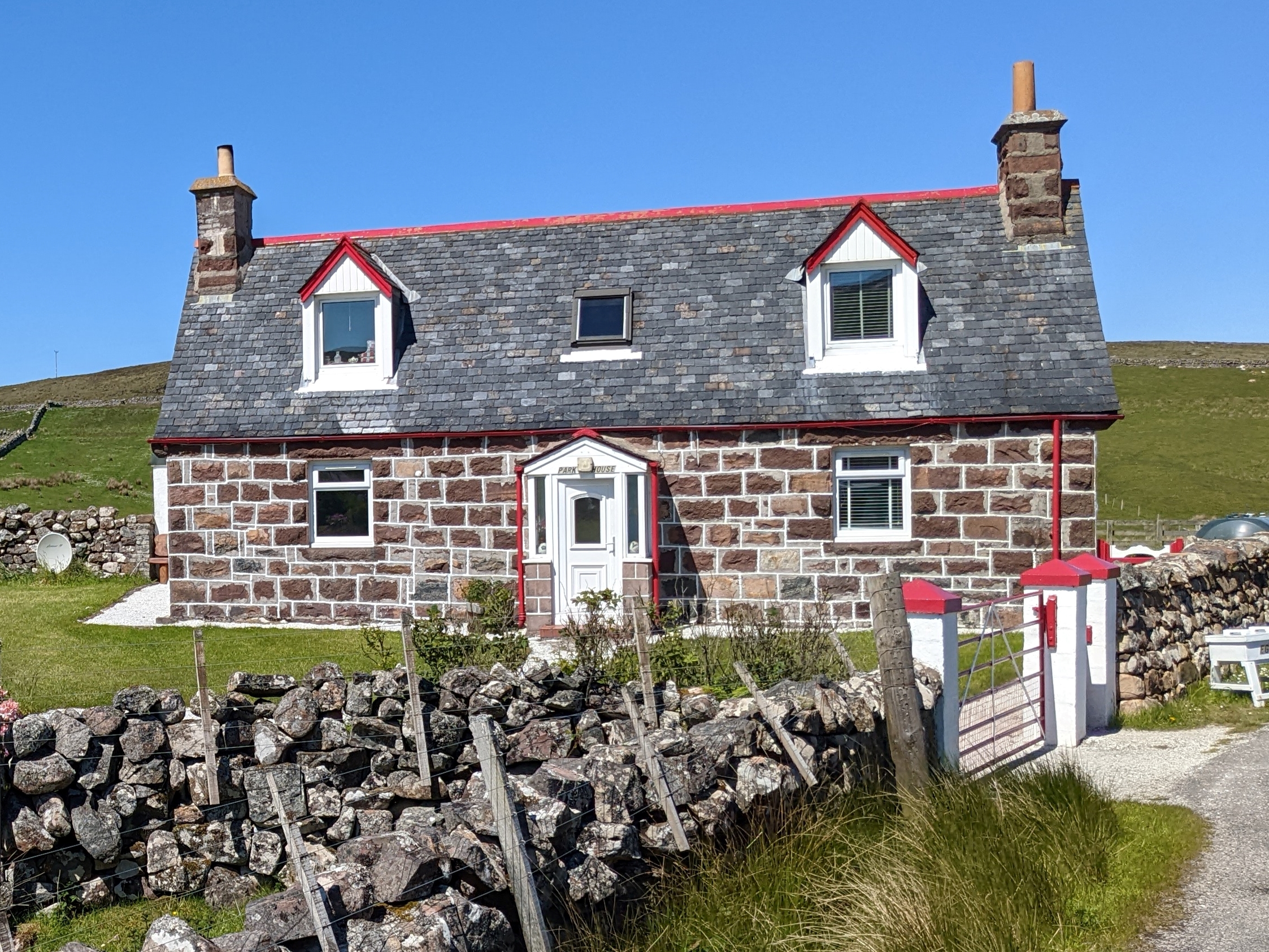
Oldshoreman Beach is an Australian-style beach, long, wide and handsome, the bright but warmless sun shining true, striking headlands at each end of the beach. We stretched the legs here with a walk on the dunes and along the sand, dipped our feet into the cold Atlantic and admire the Scots who braved the frigid waters as if they were in Australia.
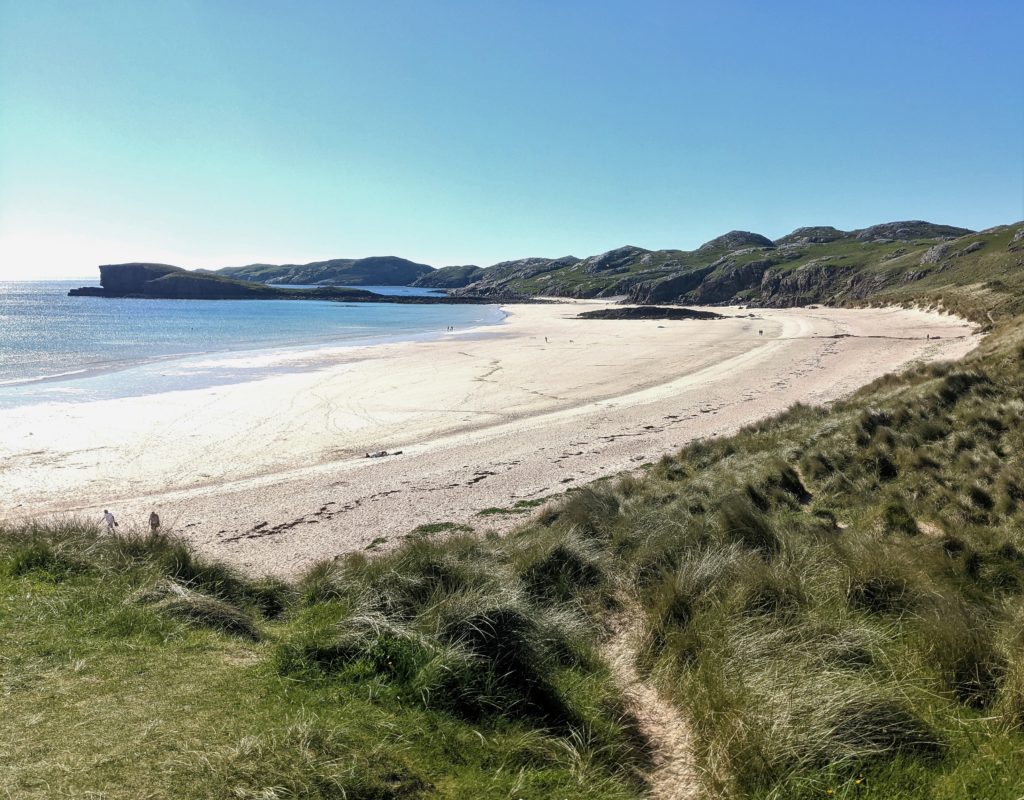
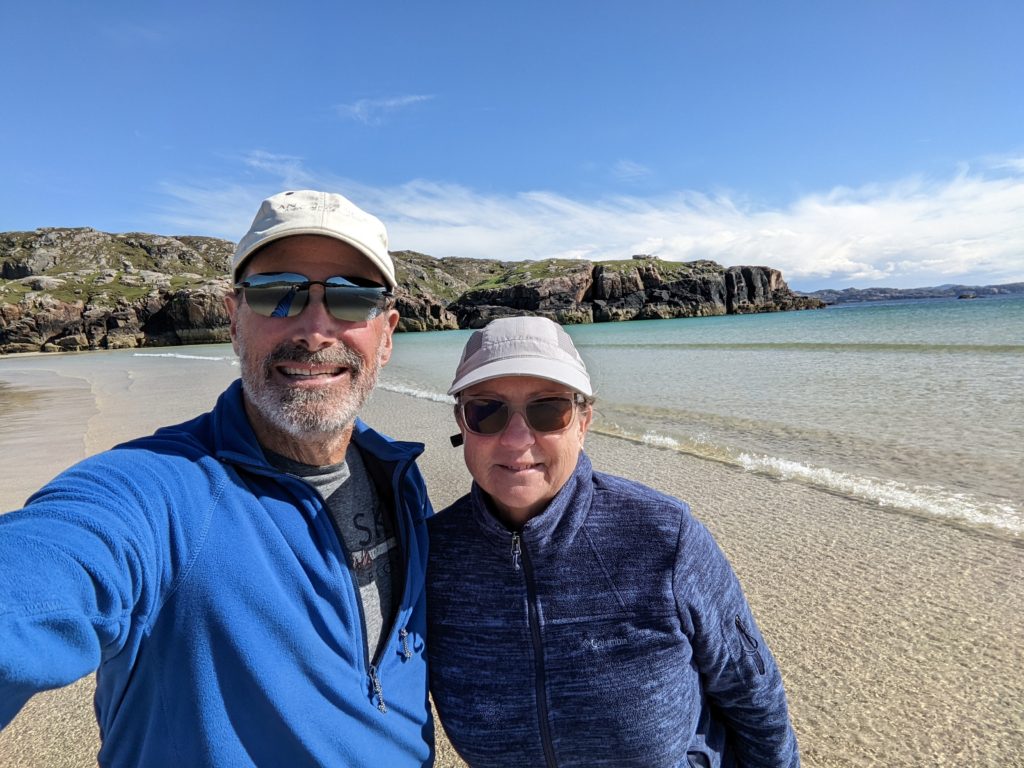
We camped at the end of the narrow track at Droman’s Pier in another forgotten place, surrounded by sheep and ancient rock fences, perched on the end of the land, the rising tide and setting sun spread out before us. Seals came in close for a late evening frolic, part of nature’s free show. Scotland, you are way beyond our imagination.
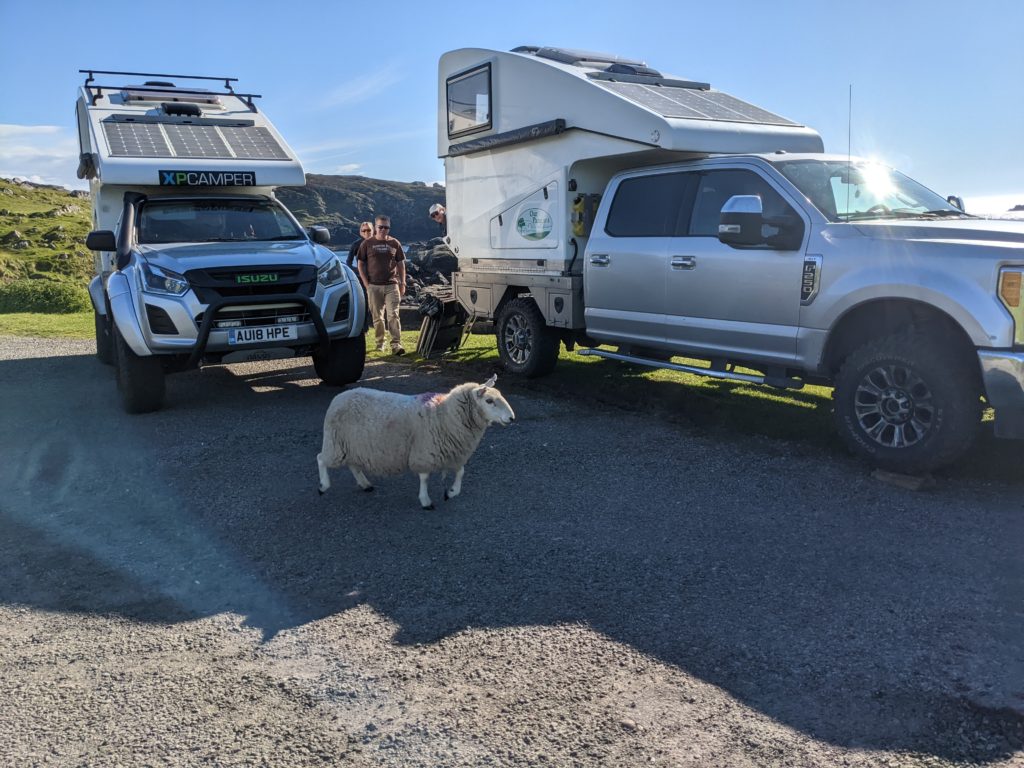
But wait, there’s more. The next day we drove up to Durness and took the little ferry across the Kyle of Durness before jumping into a 16 seater bus for the one hour slow and bumpy trip out to Cape Wrath. This lighthouse, first built in 1822 to help seafarers go around this northwestern point of Scotland, has no through roads to it and most of the massive heath-covered headland has been used by the military for training. Today it provides a glorious excursion to this far corner of Scotland and on this picture-perfect day we rolled in it.
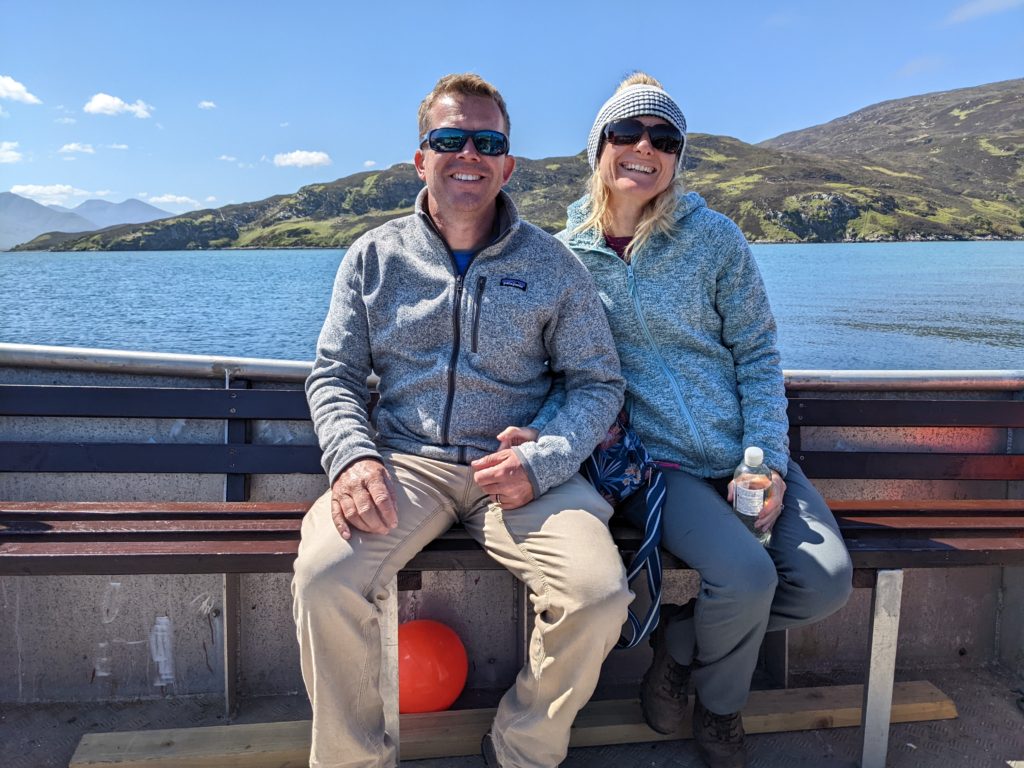
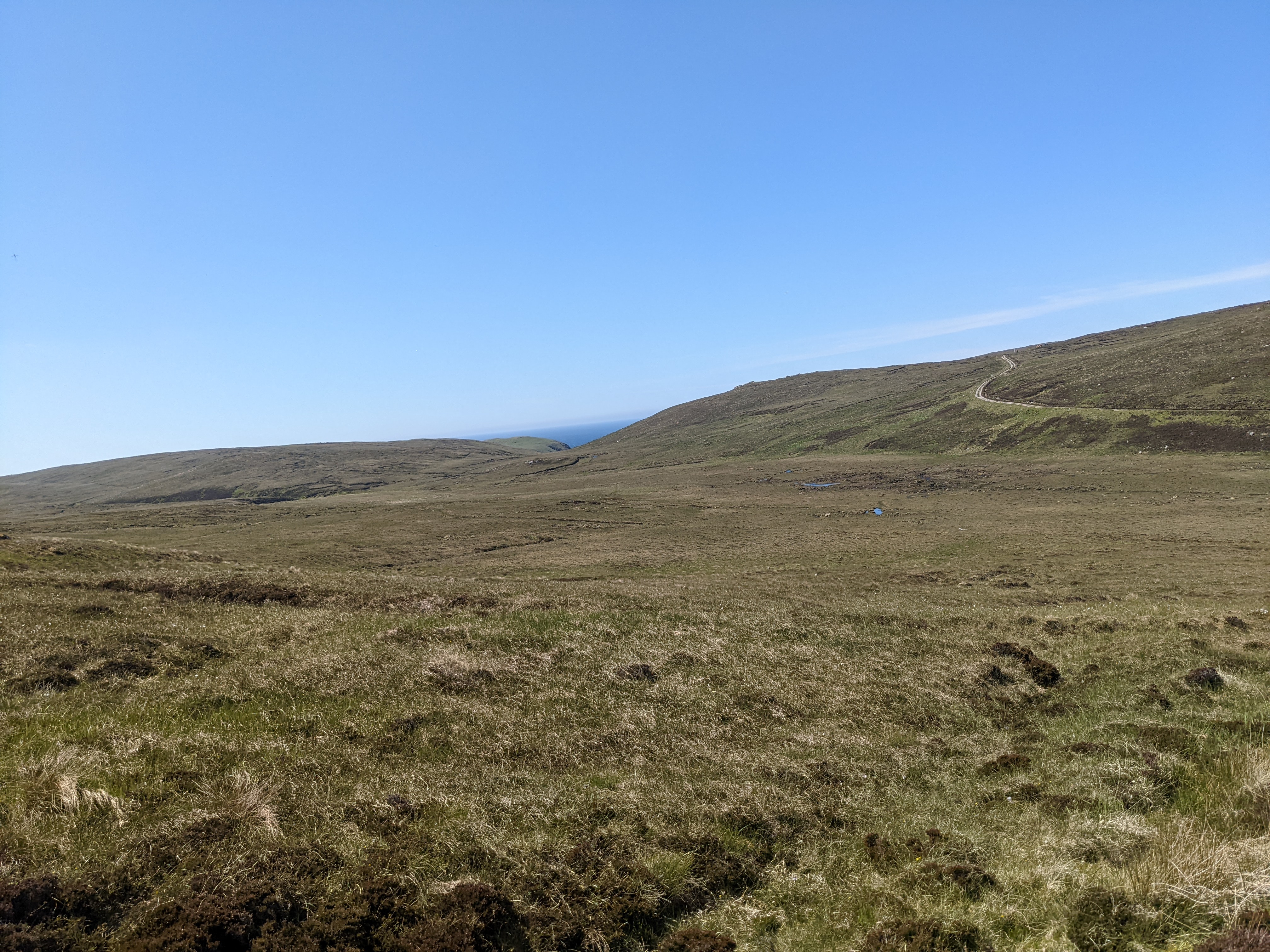
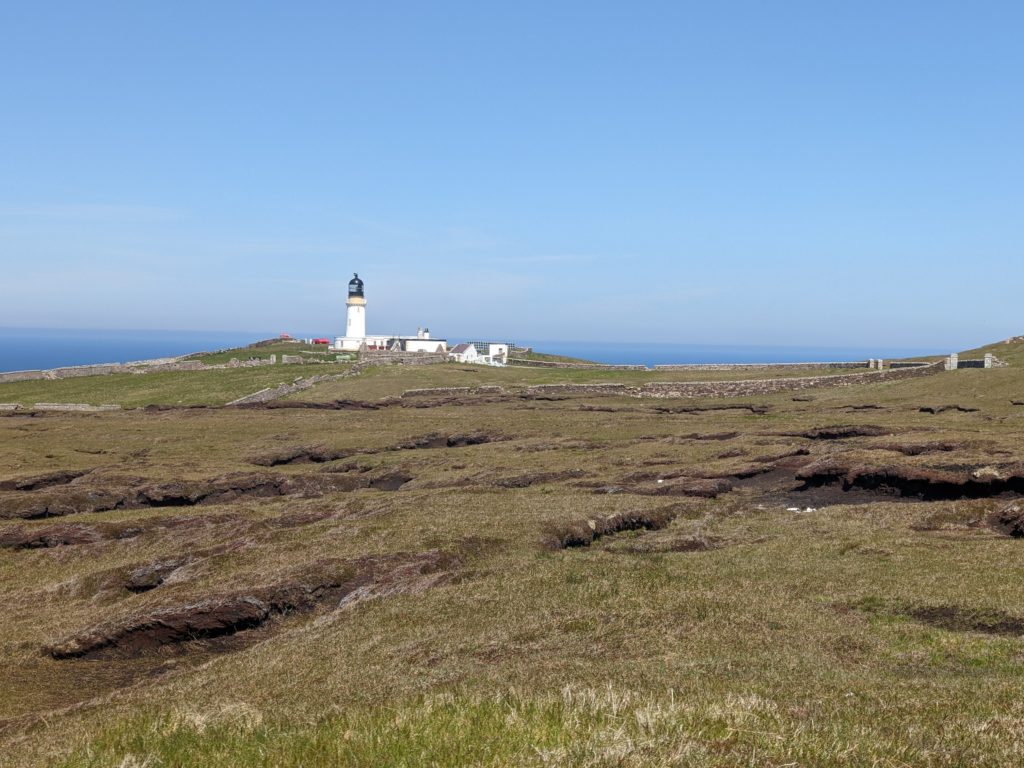
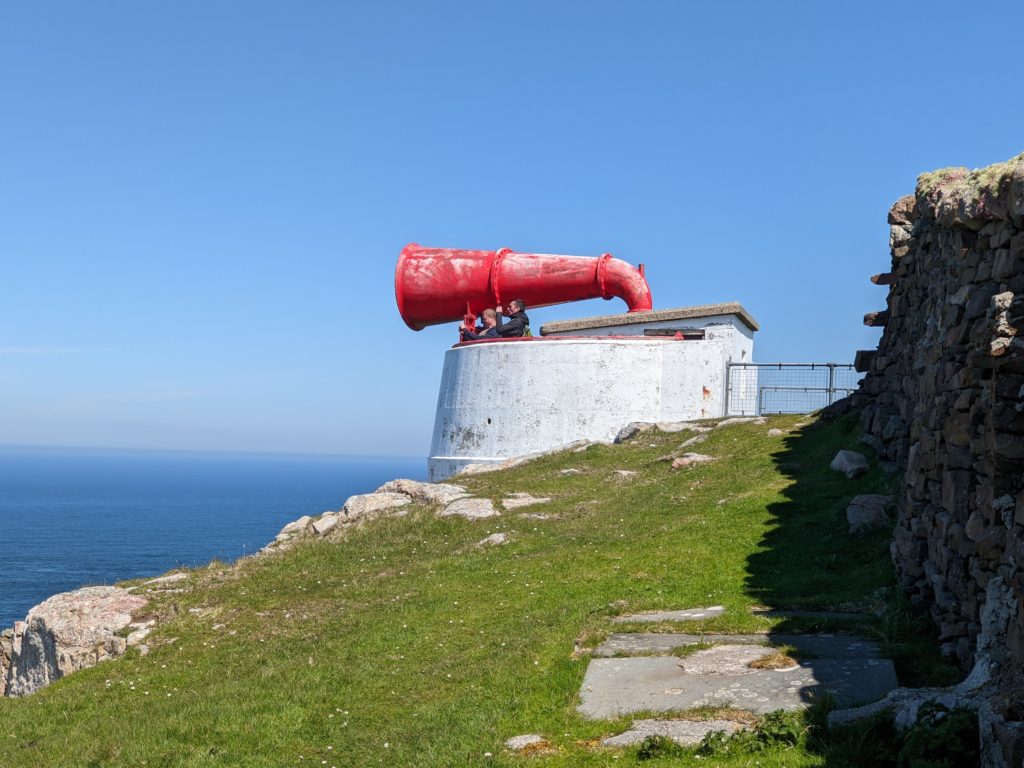
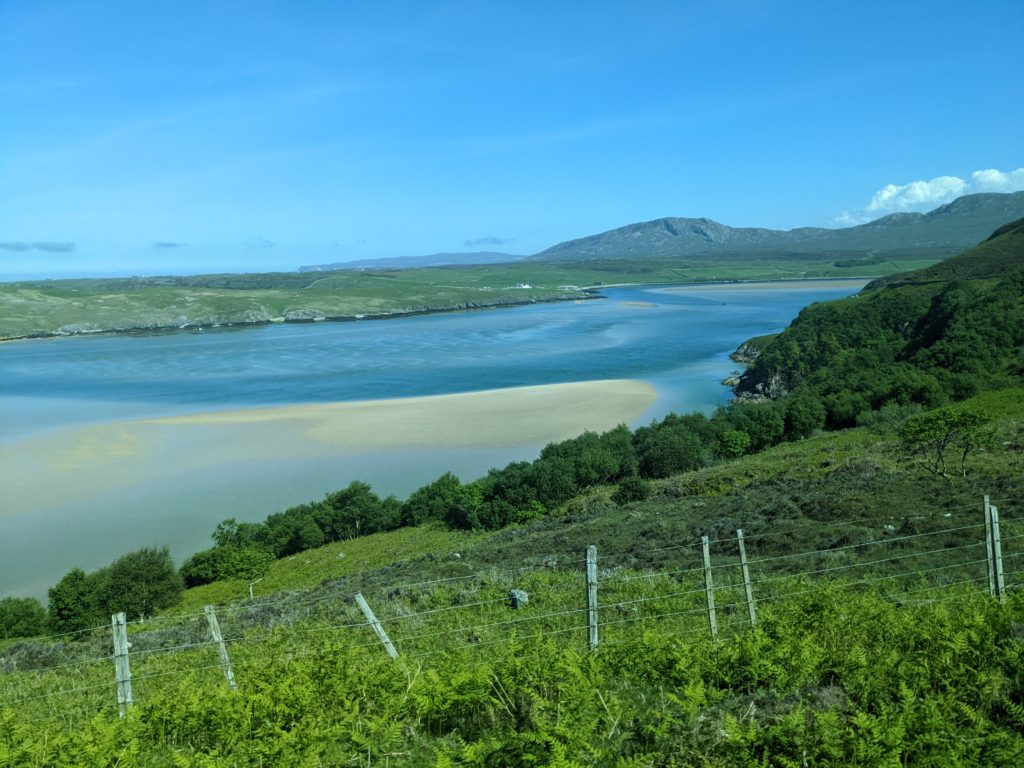
We’ve enjoyed learning new words from Scottish Gaelic, including loch (lake), kyle (inland waterway), mull (rocky point or headland), glen (narrow valley), mire (swampy ground), ben (mountain), craig (sea cliff), and fell (rocky hill). It seems every sentence a Scotsman says starts with ‘Aye’ which means yes. And my favourite phrase in a land where this time of year it doesn’t get dark until almost 11pm is ‘evening sunshine’. I can confirm we sit out in the evening sunshine wearing every layer to stay warm and our sunglasses. Aye, it’s great.
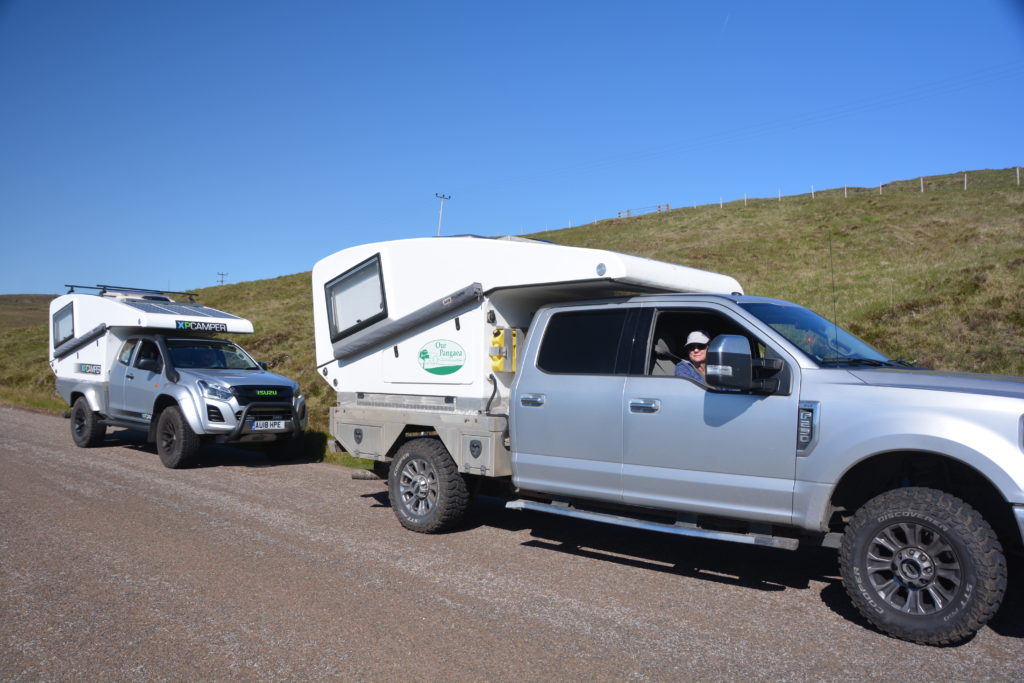
After camping that night on the banks of the Kyle of Durness, a wide tidal stretch of water which entertained us with its rising tide, seabird life and Gavin and Emma going for an early morning SUP paddle, we headed further up the northern coast, stopping at Smoo Cave, a huge limestone cave that opens up to the sea, before making the long drive around Loch Eriboll with its dramatic bald mountains all around. This is beautiful but remote and alien land, even too harsh for hearty Scotsmen to live.
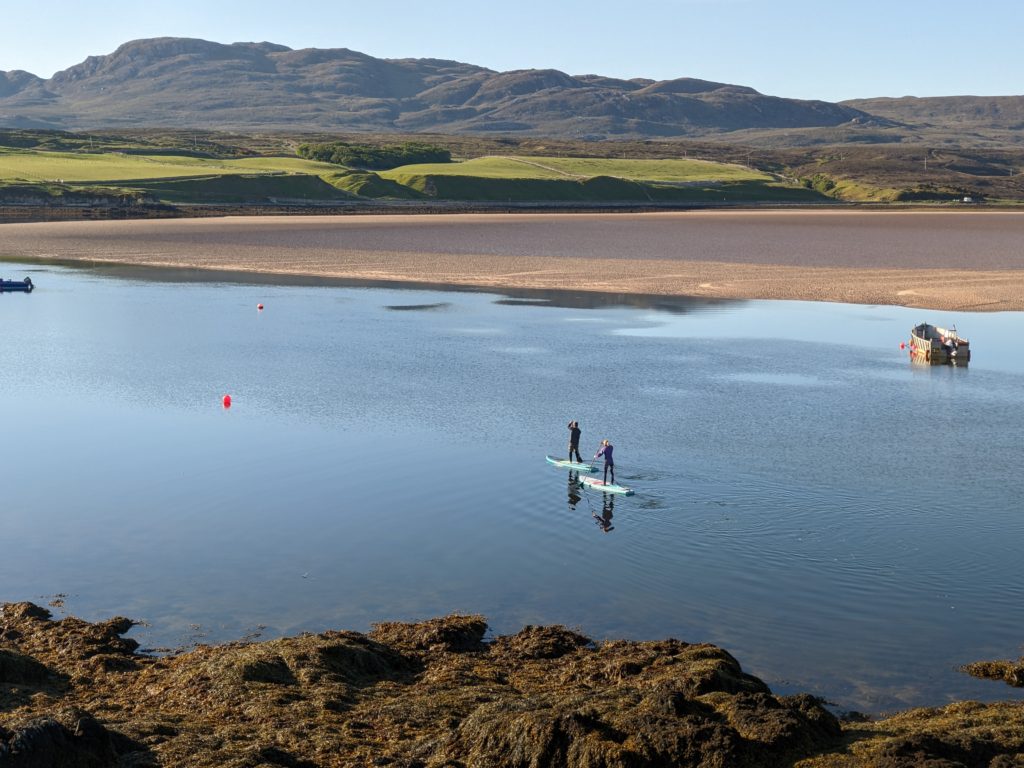
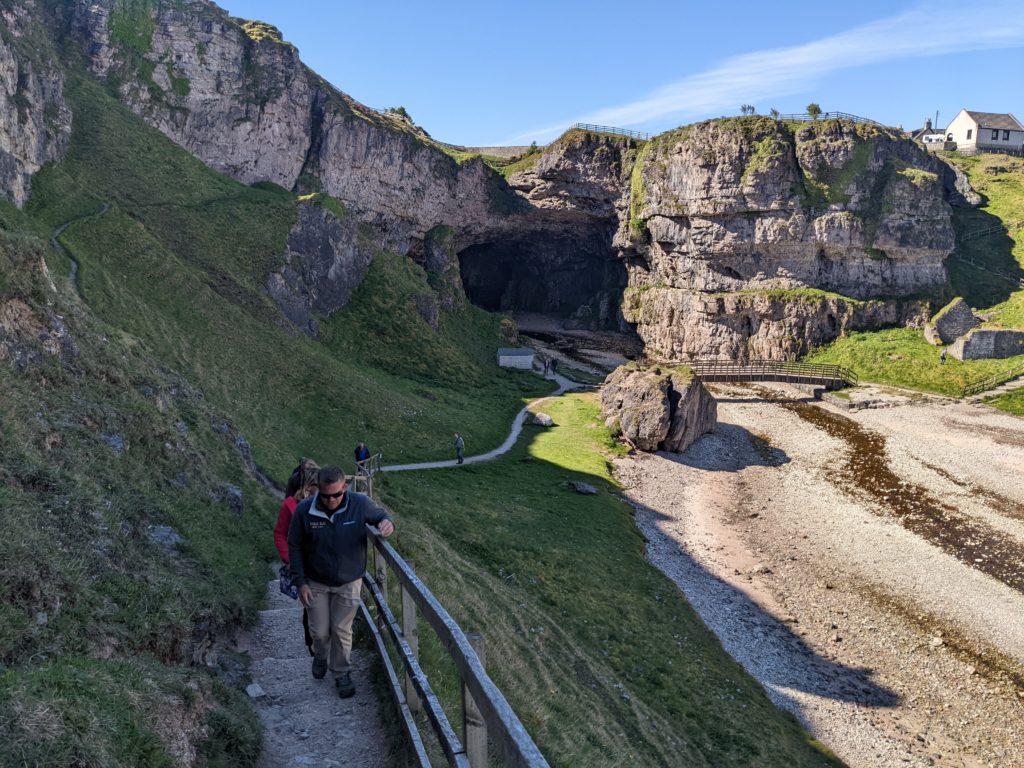
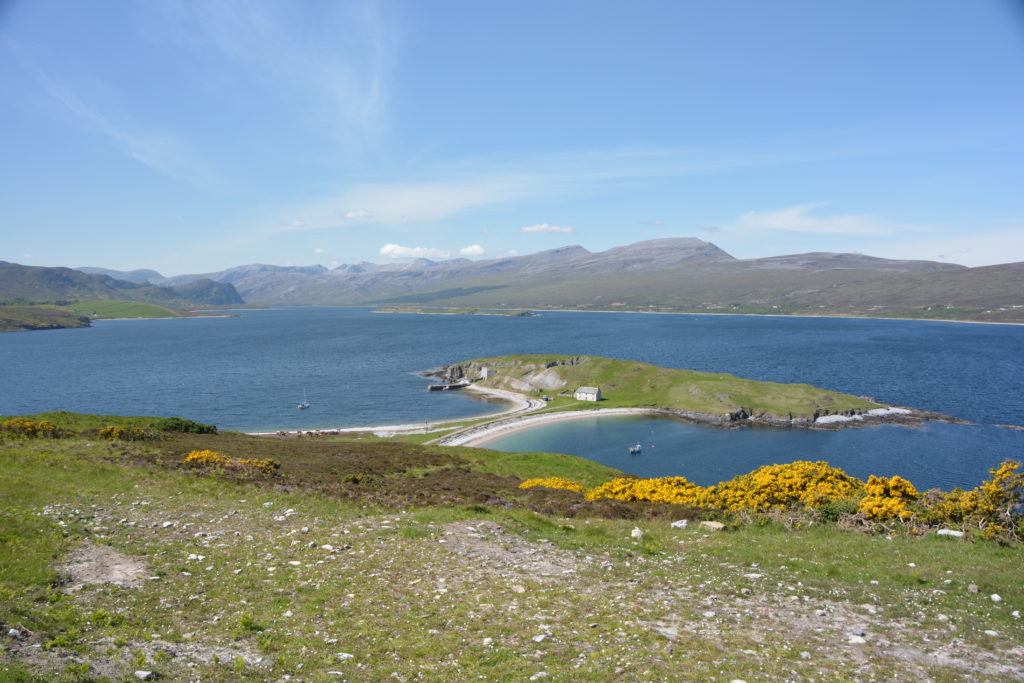
Eventually we made it to famous John O’Groats, the official highest point in the UK at a latitude of 58.63 degree north latitude. Julie and I had actually visited John O’Groats on our Scottish driving holiday, the first one we had ever taken together, way back in the dark ages, 1981. We certainly didn’t recognise the place now with all its souvenir shops, crafts and gifts stores, ice cream outlets and hordes of people. Still, we’re into these sorts of superlatives and it was nice to finally get here.
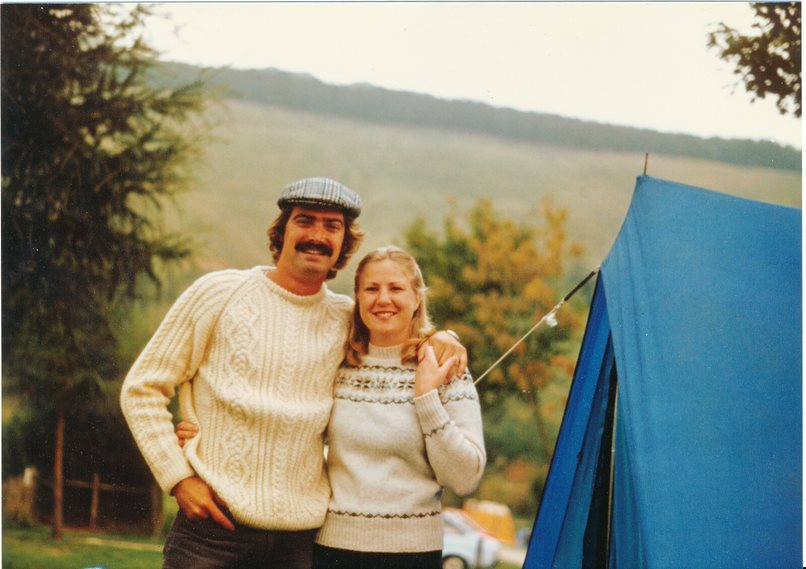
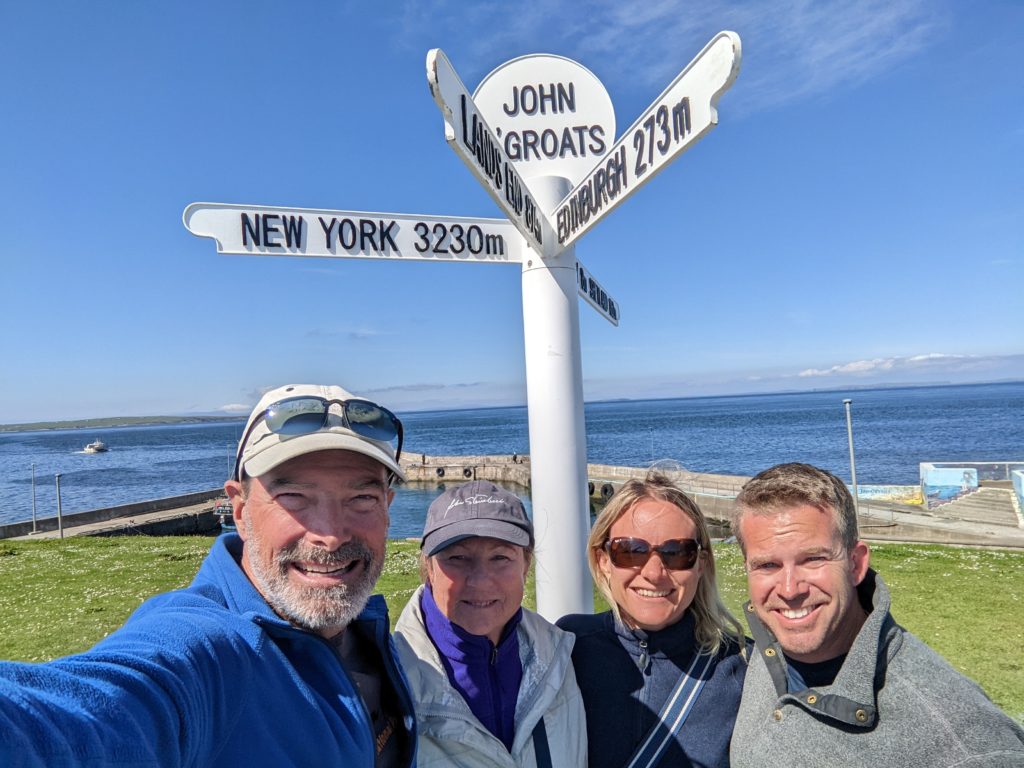
We camped that night on Dunnet Head after finally fulfilling one of our missions to see puffins on the rocky cliffline. Puffins are cute little birds, distinctive with their orange legs and colourful beak but a little ungainly as well. This was our last night with Gavin and Emma as they had to return to the real world but we sat around a warm fire and toasted our success. Thanks to the two of you, Gavin and Emma, for teaming up with us for a week and sharing your island with us!
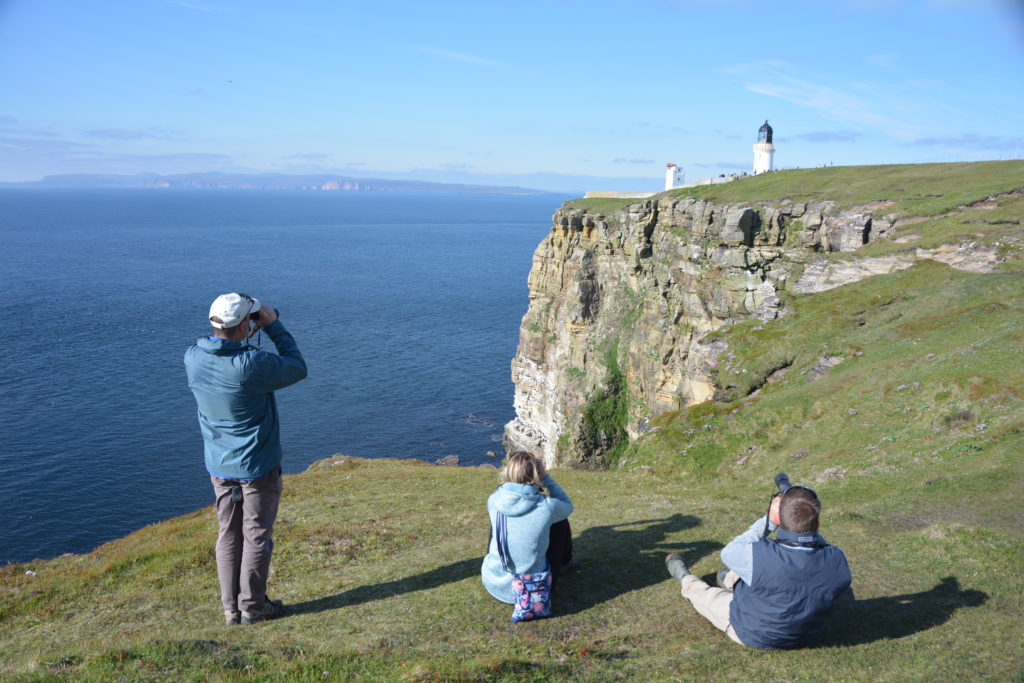
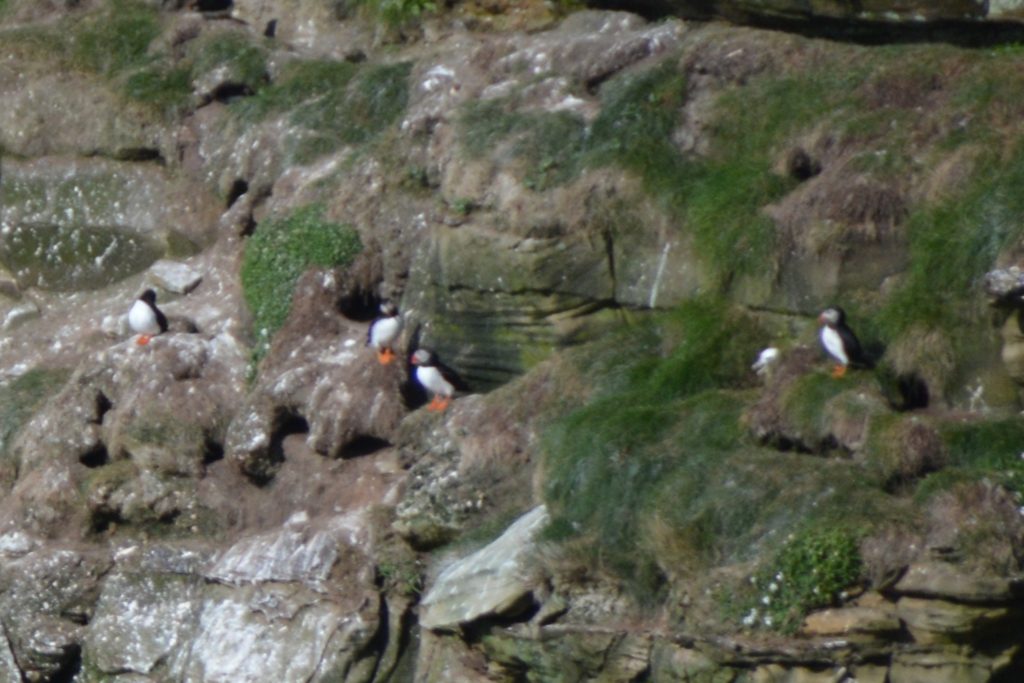
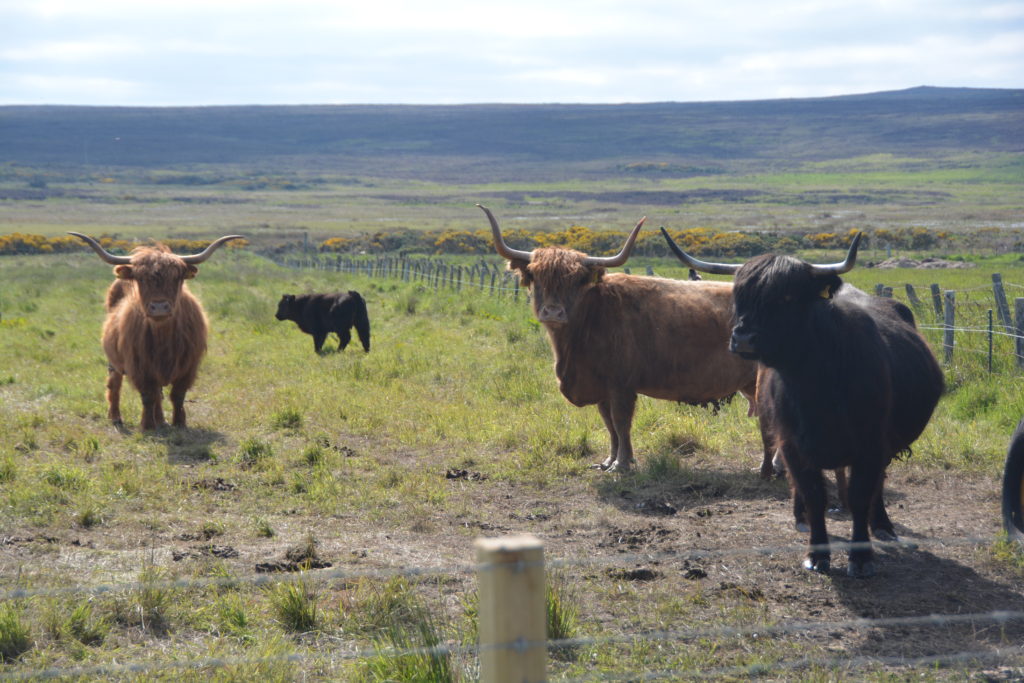
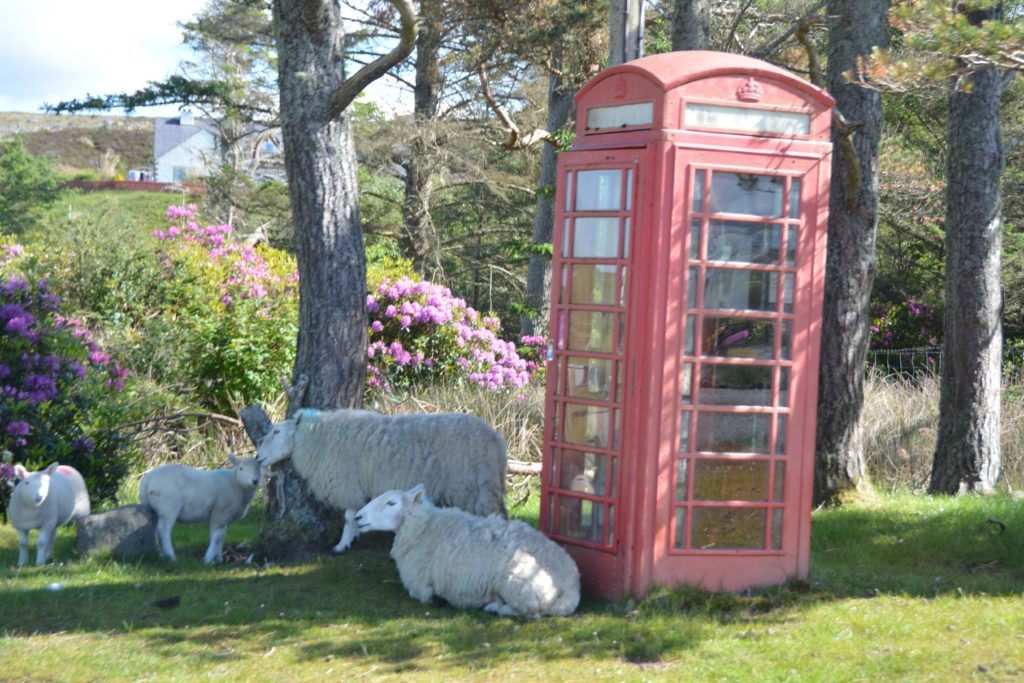
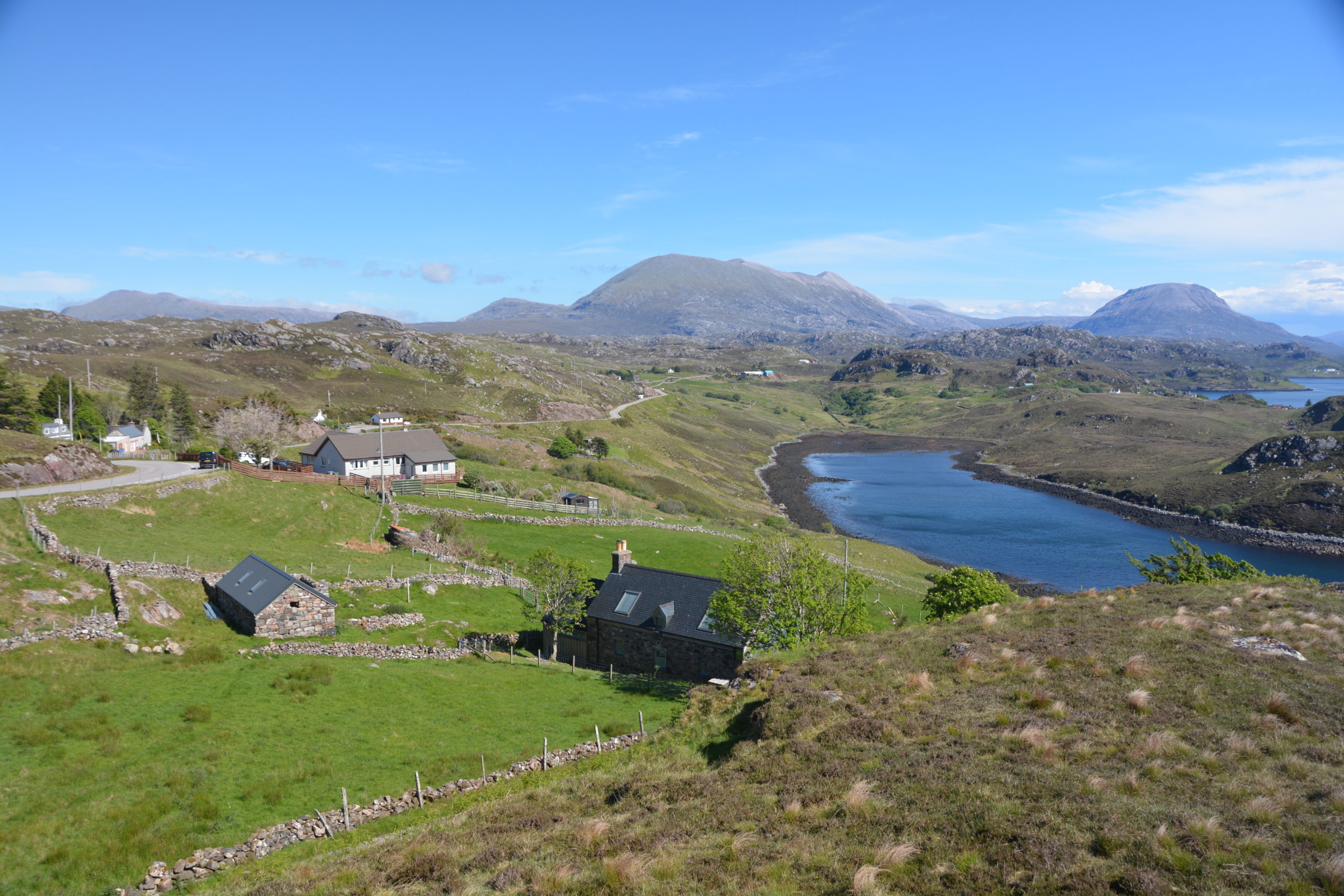
The scenery is amazing.
So loving your adventures, and the full circle of life to John O’Groats is very special…you haven’t changed a bit
xoxo
Hi Anne, we enjoyed our time in Scotland, partly to relive our travels there many years ago. And I’m sure you’re referring to Julie when you say you haven’t changed a bit. Cheers, Bill